

Do you operate a yacht? Our app is perfect for you
Yacht fuel cost calculator - how to estimate the costs.
Yacht captains have many responsibilities when it comes to the management of their vessel. One of them is keeping track of expenses, which is why it is important to familiarize yourself with the vessel’s operational costs. Keeping a luxury superyacht afloat isn’t cheap, and many claim that the average annual cost ranks up to 10% of the vessel’s price.
From these expenses, a significant portion goes to fuel. Filling up the tank of your boat is quite pricey, which is why a growing number of boat owners want to know exactly how much they are looking to spend for their upcoming voyage. This is also important for people who want to charter a boat for their holiday.
If you’re wondering how to best estimate the costs involved, you’re in the right place. This article will help you calculate your vessel’s yacht fuel cost while giving an overview of all the criteria used as variables. To make the process even easier, we link to a yacht fuel cost calculator to help you get an indication of the expenses you’ll need to cover. Let’s delve in!
Yacht fuel cost calculator
How to estimate yacht fuel costs, how much fuel does a yacht use.
- Price of boat fuel per gallon?
Yacht fuel formula
The easiest way to calculate your fuel costs is by using a yacht fuel cost calculator. There is a great calculator available here in case you want to save time and get an approximate estimation.

As you can see, the yacht fuel cost calculator has many variables which you need to be aware of before you set out to calculate the approximate price. This is what we will be dealing with in the next few chapters.
To help you get a better understanding of the calculation process we will do things manually while giving you the exact formulas used to calculate your vessel’s fuel needs. Therefore, make sure you keep on reading.
There are several things you need to keep in mind when you first set out to estimate the total fuel cost for your next voyage. These are summarised in the following points:
- Distance of journey - The total amount of nautical miles (or km)
- Cruising speed - The (average) speed of your vessel (in knots or km/hr)
- Fuel consumption - Understanding how many gallons (or liters) of fuel are consumed per hour
- Yacht fuel price - Understanding the average market price per gallon of fuel
The first two points depend solely on your needs and personal preference, which means that they are more flexible on a subjective basis. The latter two points may require a bit of research, especially if you’re not familiar with the engine of the vessel.
In the following sections, we will delve deeper into each of the points mentioned above, and offer the required formulas to help you calculate yacht fuel cost.
Calculating distance and speed
To understand the exact distance you are looking to cover in your next voyage, you can simply use Google Maps to plan your route. The following video explains the process in detail.
As soon as your route is planned out, you can measure the distance as well, selecting the preferred method of calculation. In our case, it is best to measure in nautical miles (1nm=1,85km), as this metric is more commonly used among sea men. The yacht fuel cost calculator above has an embedded map that helps you pinpoint the journey you want to make.
Next comes the cruising speed. The number is mostly calculated in knots (nautical miles/hr). The speed with which the vessel will cruise depends on the captain onboard, but is often influenced by the owner and guests onboard. You can make a rough estimation of this number based on previous trips.
Next, we need to calculate the amount of fuel that you will likely need. To do this we need to understand the engine type, its horsepower, and several other factors.
Let’s take a marine diesel engine for example. These engines are very common on motor yachts and consume approximately 0.4 pounds of fuel per hour for each unit of horsepower. You can find fuel consumption info for your specific engine by looking it up on the web or by calling the service number.
Once you know the fuel burn rate, it’s best to add a relative error margin of 10% based on minor factors. These include weather conditions, vessel size, and drag, all of which can increase the fuel burn.
How much fuel does a yacht use per hour?
Now that you know all the variables you can go ahead and calculate the amount of fuel that your yacht will need.
- Start by calculating the fuel burn per hour based on the horsepower of the engine.
- Add a multiplier based on the cruising speed of your vessel.
A vessel with a diesel engine of 300 horsepower will most likely burn 16-17 gallons per hour, which you can then use as a guideline when calculating the travel time based on the nautical miles you are looking to cover.
Superyachts are consuming much more fuel. An average 70-meter luxury yacht will burn around 130 gallons per hour with the engines running, while the amount increases significantly when the ship is moving. On average, you are looking at ±€2000 per hour (±1000 gallons) to achieve a speed of 20 knots. Of course, the higher the cruising speed, the more fuel you will be burning per hour, which in turn makes each hour at sea more expensive.
How much does boat fuel cost per gallon?

The exact price you are looking to pay per gallon depends on the marina you find yourself in. By looking at several price points of marinas, we get the following:
- Average diesel prices range from $3.2-$3.9 per gallon
- Average petrol prices range from $7.2-$7.8 per gallon
Note that discounts usually apply whenever you choose to purchase large quantities of fuel.
Why is boat fuel so expensive?
Marine fuel pricing is heavily inflated due to low supply and high demand. In short, the limited number of fuel stations at marinas have to service all the yachts that dock, which leads to a no-choice monopoly.
That said, yacht owners are usually not that concerned about the small price spike that marinas charge as an extra. If anything, they are happy to pay due to the convenience of the service.
How much fuel does a yacht hold?
Once again, the answer to this question depends on the size of the vessel. Smaller yachts can hold around 1300 gallons of fuel, while the bigger vessels can store up to 100,000 gallons. The ship’s engineers should be able to provide this number for the vessel you command.
Now that we have a better understanding of all the variables that determine the cost of fuel, we can go ahead and take you through the calculation process step by step.
First, know the total duration of your cruise. To obtain this information, divide the number of nautical miles by the cruising speed of your vessel (knots). For example, if you want to make a journey that totals 150 nautical miles while traveling at 20 knots, the yacht fuel formula looks as follows:
Total duration = 150 nm / 20kn
Total duration = 7,5 hrs
Note that the amount of fuel consumption may end up higher than expected if:
- Sea and weather conditions are not favourable
- You plan to make short stops along the way while the engine keeps running
Next, what you want to do multiply the number of hours by the number of gallons that your engine burns on an hourly basis while moving at the speed you previously indicated. If we take, as an example, the superyacht mentioned in the previous examples, we would make the calculation as follows:
7,5 hrs x 1000 gph = 7500 gallons
Now assume that you will also make two stops along the way, an hour and a half each, in order to let the guests enjoy their time; maybe ride a jet ski.
You then multiply the added number of hours with the consumption rate of a running engine. In this case:
3 hrs x 130 gph = 390 gallons
All that is left to do now is add up the total amount of fuel needed and multiply the number with the price per gallon.
(7500+390) x $3,5 = $27615
In this example, the final cost of your will set you back a little bit more than 27 thousand dollars. Just to be safe, calculate the additional 10% (margin of error) to be prepared against unexpected mistakes. This added amount is not necessarily an ad-on when you consider chartering. Private yacht owners, however, should add the amount to their final cost.
And that's it! You should now have a better idea on the steps you need to follow to calculate the fuel costs for your yacht. While there is quite a bit of information you should keep in mind, it is best to plan out everything with detail to avoid unforeseen costs. If you enjoyed this article, check out our blog post on yacht electrical systems as well.

How Much Fuel Does a Yacht Use? An In-Depth Analysis
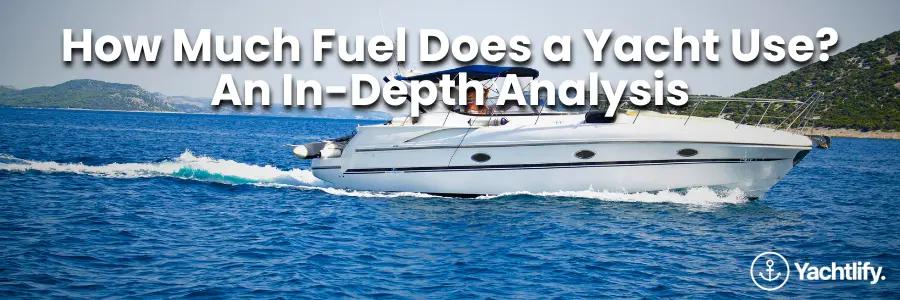
When it comes to luxury and adventure on the high seas, yachts are the epitome of both. Whether you’re a yacht owner or dreaming of chartering one for your next vacation, understanding the fuel consumption of these majestic vessels is crucial. Fuel usage not only impacts the cost of your journey but also has environmental implications. In this article, we dive into the factors affecting yacht fuel consumption and provide insights to help you estimate how much fuel a yacht uses.
Understanding Yacht Fuel Consumption
Fuel consumption in yachts is influenced by several factors, including the yacht’s size, engine type, cruising speed, and conditions at sea. Here, we break down these elements to give you a clearer picture.
Yacht Size and Engine Type
Yachts come in various sizes, from smaller 40-foot models to massive 100-foot plus luxury liners. Generally, the larger the yacht, the more fuel it consumes. Engine type also plays a significant role. Traditional diesel engines are common, but newer models may feature more efficient or hybrid engines that can impact fuel usage.
Cruising Speed
Speed is a significant factor in fuel consumption. Higher speeds increase resistance in the water, requiring more power and, consequently, more fuel. Cruising at a yacht’s optimal speed, often referred to as the “hull speed,” can help maximize fuel efficiency.
Conditions at Sea
Sea conditions can also affect fuel consumption. Smooth, calm waters allow for more efficient travel, while rough seas can increase fuel use due to the additional power needed to maintain speed and stability.
Estimating Yacht Fuel Consumption
While it’s challenging to provide a one-size-fits-all answer due to the variables involved, we can offer some general guidelines. On average, a yacht might use between 20 to 100 gallons of fuel per hour. Smaller yachts, such as those around 40 feet, tend to be on the lower end of the scale, consuming about 20 to 40 gallons per hour. Larger vessels, which are over 100 feet, can consume significantly more, sometimes exceeding 100 gallons per hour, especially at higher speeds.
Example Calculations
Let’s look at an example. For a 70-foot yacht cruising at a moderate speed of 20 knots, fuel consumption could be around 50 gallons per hour. If you’re planning a 100-mile journey, at 20 knots, it would take you approximately 5 hours. This means the total fuel consumption for the trip could be around 250 gallons.
Tips for Reducing Fuel Consumption
- Cruise at Efficient Speeds: Find and maintain your yacht’s hull speed for optimal fuel efficiency.
- Regular Maintenance: Keep the engine and hull in top condition to reduce drag and ensure the engine runs efficiently.
- Plan Your Route: Opt for the most direct route and consider current sea conditions to minimize unnecessary fuel use.
- Lighten Your Load: Only carry what you need for your journey, as extra weight can increase fuel consumption.
Understanding and managing fuel consumption is crucial for any yacht owner or enthusiast. By considering the factors outlined above and implementing fuel-saving strategies, you can enjoy the luxury of yachting more sustainably and cost-effectively. Whether planning a short excursion or a long voyage, a careful consideration of fuel use will enhance your experience on the water.
Remember, every yacht is unique, and so is its fuel consumption. For specific figures, consult your yacht’s manual or speak with a marine professional who can provide insights tailored to your vessel. Enjoy your time at sea, and sail smartly!
Listing your boat with Yachtlify provides several unique benefits, including:
- List once, post on multiple platforms (Yachtlify.com, Facebook Marketplace, Instagram, and others).
- Schedule showings and sea trials with our calendar and reminders.
- View listing engagement analytics across platforms.
- eSign, state forms, and Coast Guard forms to manage closing documentation in once place.
Boat Fuel Consumption List
The fuel consumption of any yacht, can vary widely based on several factors including the yacht's size, engine type, cruising speed, and conditions under which it is operated.
The figures above are average calculated.
Boat Fuel Cost Calculator
Data Policies
Social media, yachts zenith nautic s.l.
VAT Number: B56880875
Your source for the latest news on yachts, boats and more. Read through our articles to find out how to compare boats and find the right fit for you!
Measuring your Yacht Fuel Consumption per Hour
Oct 10, 2019
less than a min
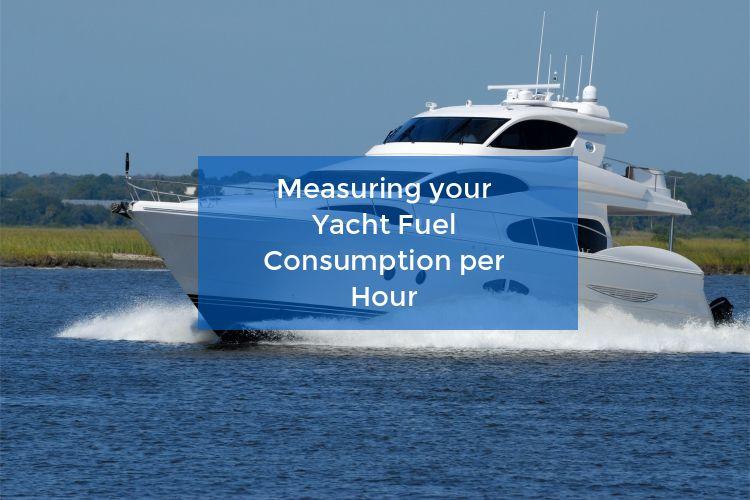
How to measure your yacht fuel consumption per hour
Yachts are quite similar to other vehicles in the sense that they work through fuel. Similarly to any other vehicle, it is important to calculate the yacht fuel consumption per hour before you plan a trip or before you purchase a vessel. Fuel consumption is also a good comparison base between boats. Whether before going on a trip, or buying a yacht, you need to have all the facts straight and know how much money you are going to invest not only at once upon purchase but also periodically.
There are different factors in the fuel consumption of a yacht. For example, if you use a generator or if you stay at anchor instead of docking, the fuel consumption will be increased . The itinerary will change fuel consumption as well. Sea is different than roads and the conditions in a sea change more dramatically than on land, which also impacts fuel consumption.
Fuel consumption for boats is measured in gallons per hour . The efficiency of boat fuel is measured in pounds of fuel that are used in an hour per horsepower. In order to be able to read the calculation right, any boat owner should know that gasoline is almost 6.1 pounds per gallon while diesel is 7.2 pounds per gallon .
Usually, if you consider that all sea conditions are pristine, the fuel consumption of a normal diesel engine is 0.4 pounds per hour for each unit of horsepower.
How to calculate yacht fuel consumption
Calculating it by hand is complicated, which is why many people choose to use online calculators . The way it works is it allows you to put down certain parameters that calculate the fuel consumption. These parameters include route , units of measurement and engine power .
Lastly , what most people are interested in is actually the cost of fuel consumption per hour. So the last parameter to include is the current price of fuel . Marine websites usually include this price up to date.
Another step that people have taken is develop a boat fuel consumption chart for their own boat and find the average in a month.
Alternatively, there is a formula that calculates the maximum fuel consumption of the engine which is:
GPH = (specific fuel consumption x HP) / The specific weight of fuel
This formula determines the fuel consumption when the engine is at full speed . If the speed is decreased then the fuel consumption is decreased as well. Basically, what you need to do is include the horsepower rate of the boat and you multiply it by the specific fuel consumption average and you divide that product by the weight of the fuel.
If you want to compare your boats GPH with other boats than you can use TheBoatDB database. If you already have a boat you can register for free and compare it with other boats within the database.
These are simple methods to calculate fuel consumption, however for a precise one you would have to know all the specifics of your boat and put the parameters through the calculator.
You might like these too

What is a Chine on a Boat lg ...
Oct 01, 2021
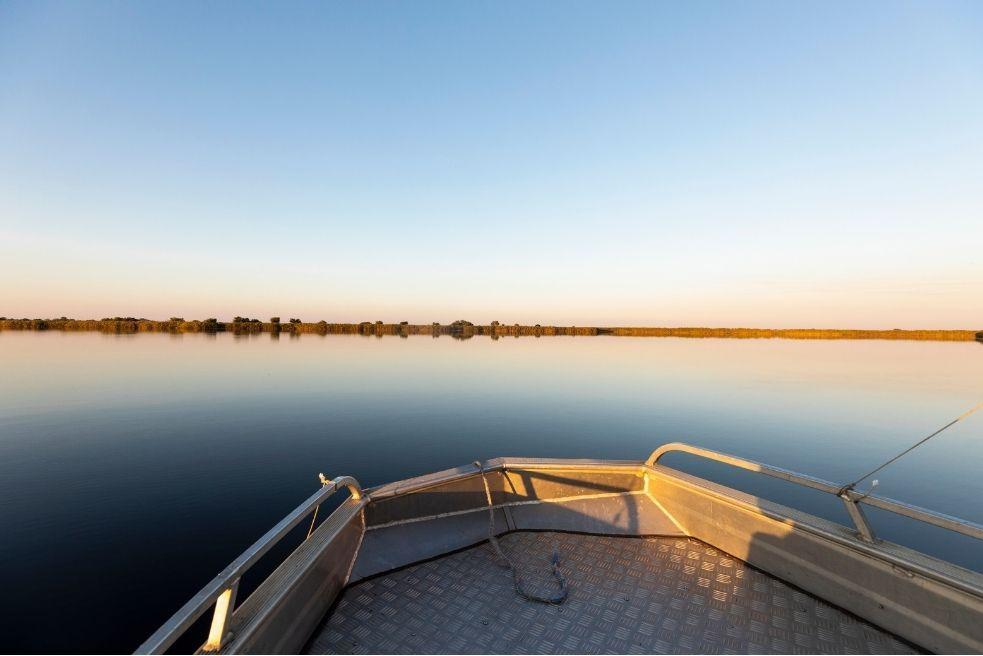
Flat Bottom Boat Advantages lg ...
Sep 30, 2021

Shoal Keel Sailboats Advantages and Disadvantages lg ...
Sep 13, 2021
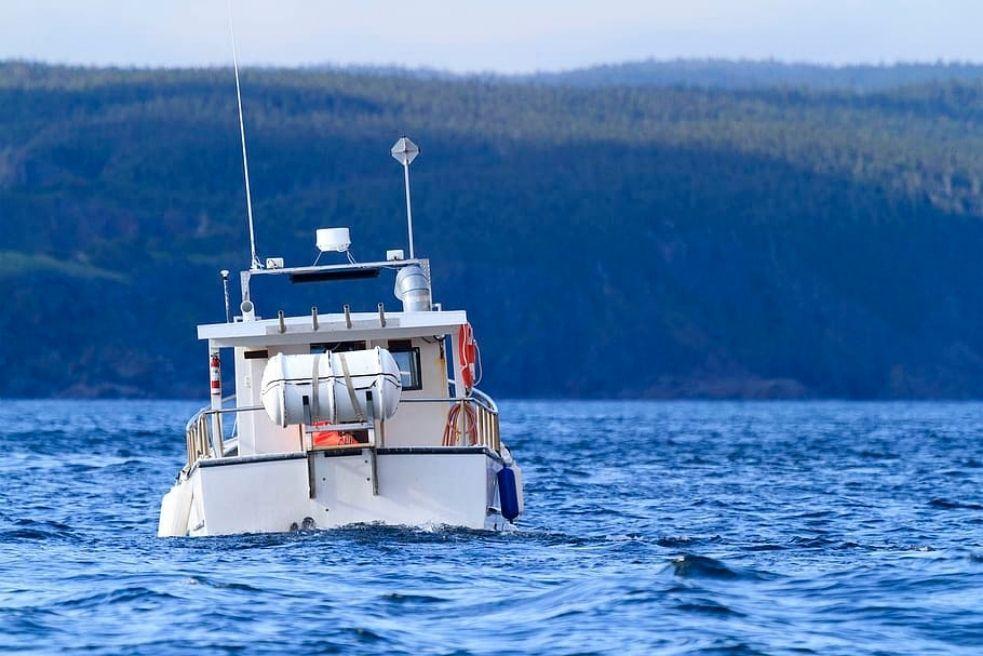
Shallow Draft Boats Explained lg ...
Sep 06, 2021
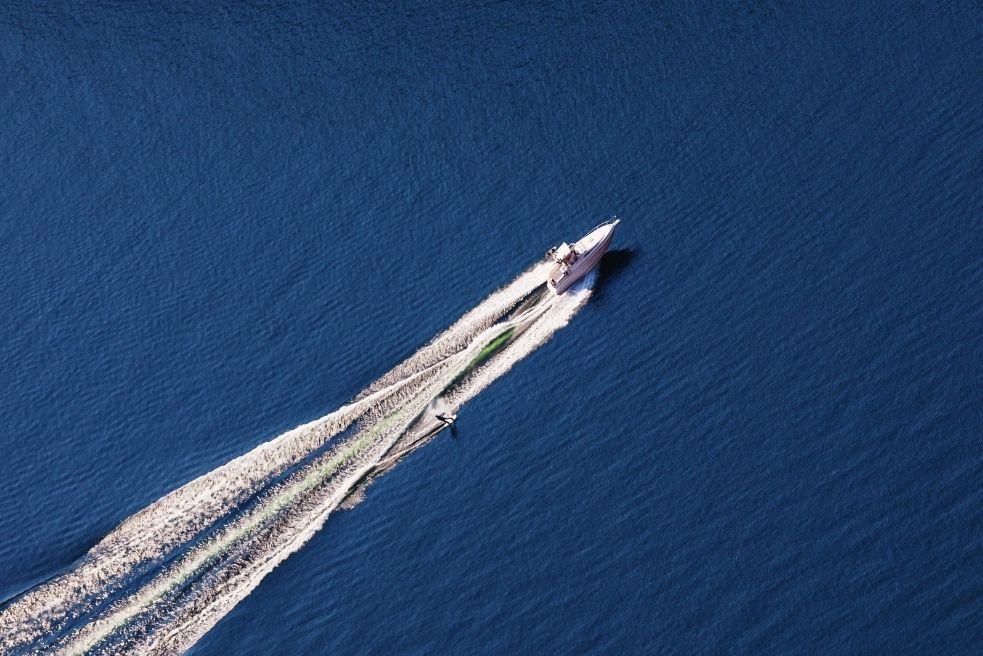
Best Boat for Open Ocean Sailing lg ...
Aug 27, 2021
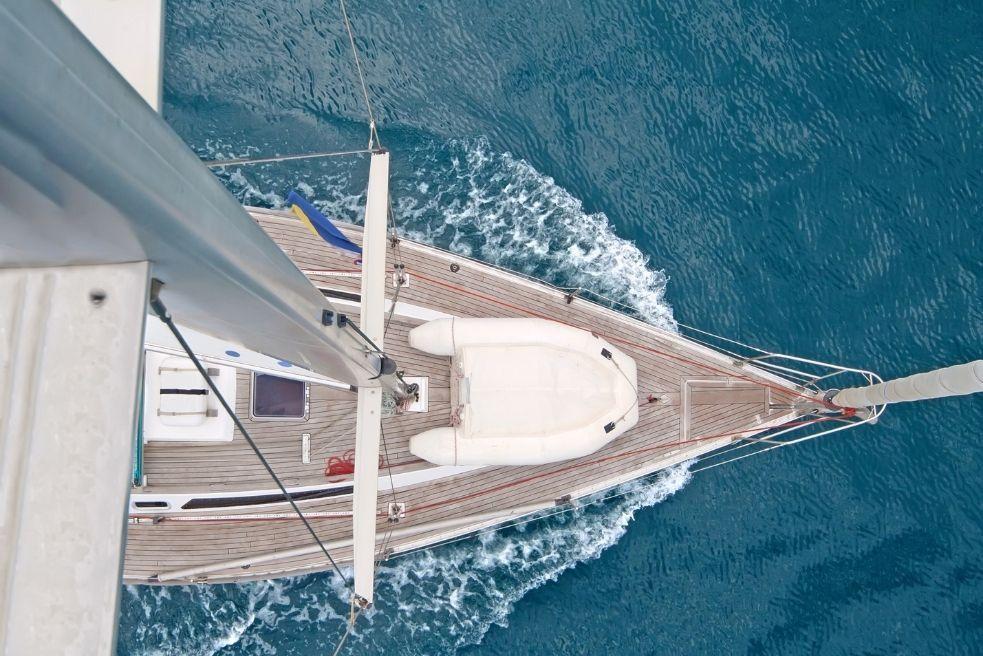
Best Boat Design for Rough Water lg ...
Aug 25, 2021
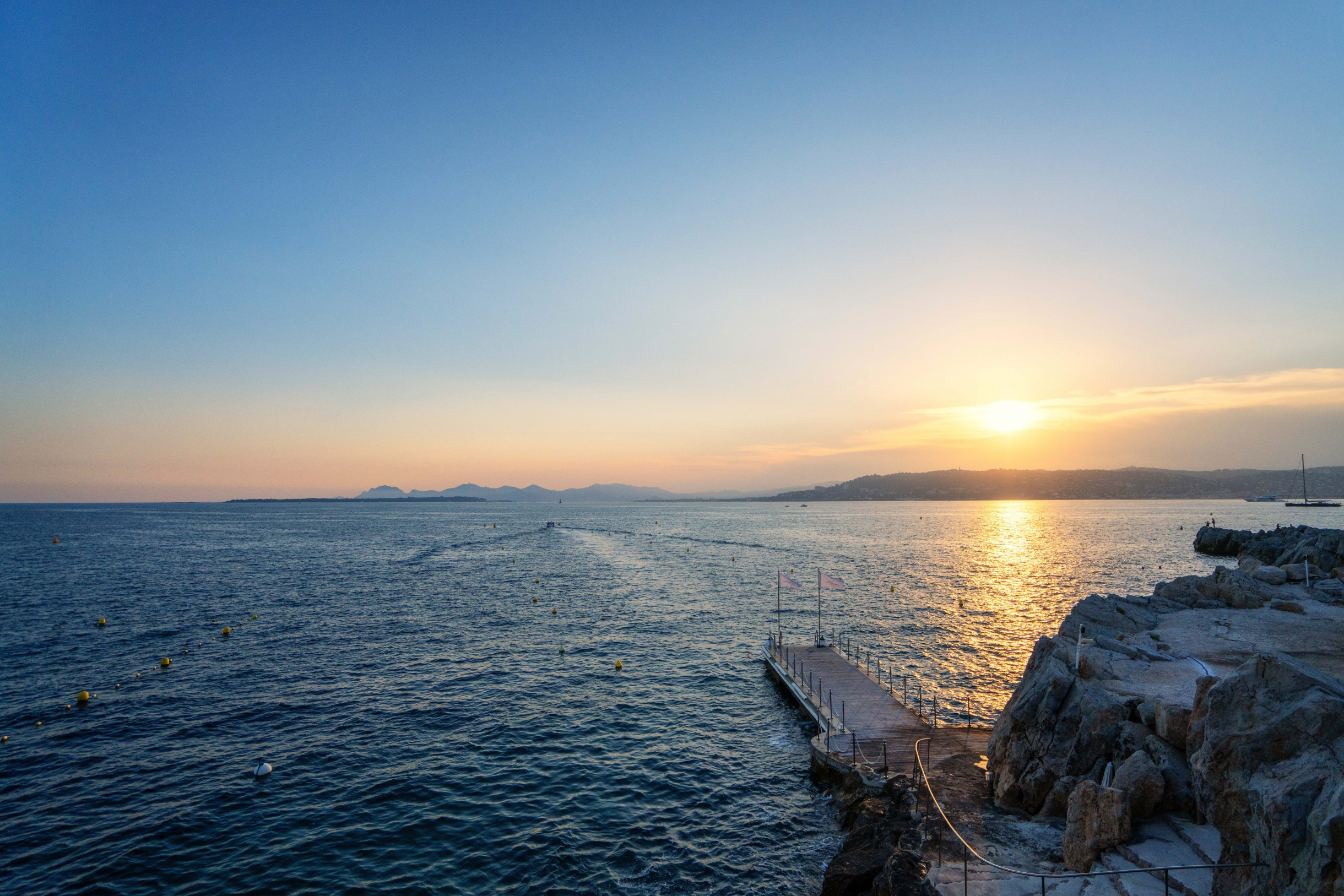
Welcome to the West Nautical Fuel Calculator
HOW TO USE:
To plot points on the map, click with your mouse - this will automatically update the distance table. Then enter the speed, fuel consumption, and fuel cost to determine the total cost of the trip.
Example 1: A fast 30m yacht cruising at 20 knots ( Lady Amanda ) will consume roughly 400-500 l/hour (more depending on engine type).
Exampe 2: A typical displacement yacht may cruise at 12 knots and consume 300 l/hour
Example 3: Some yachts can cruise at 10 knots ( Firefly ) and consume 100 l/hour
Example 4: A sailing catamaran can cruise at 8 knots and consume around 35 l/hour
Fuel prices can fluctuate, but typically fuel is between €0.8-1.2 per litre.
Get in touch with one of our client managers for a more accurate fuel distance calculation.
- 0 Fuel Consumed (L)
- 0 Total Cost
- 2024 BOAT BUYERS GUIDE
- Email Newsletters
- Boat of the Year
- 2024 Freshwater Boat and Gear Buyers Guide
- 2024 Boat Buyers Guide
- 2024 Water Sports Boat Buyers Guide
- 2023 Pontoon Boat Buyers Guide
- Cruising Boats
- Pontoon Boats
- Fishing Boats
- Personal Watercraft
- Water Sports
- Boat Walkthroughs
- What To Look For
- Best Marine Electronics & Technology
- Watersports Favorites Spring 2022
- Boating Lab
- Boating Safety

Calculating Boat Fuel Consumption
- By Brett Becker
- Updated: September 30, 2019
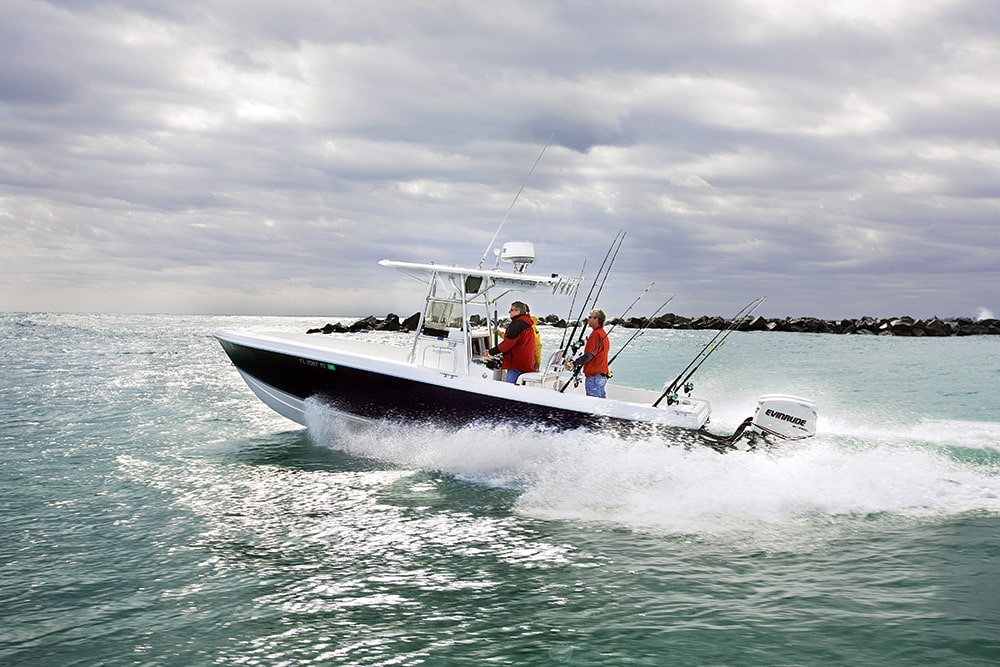
Calculating a boats fuel consumption proves important to boaters for number of reasons. With knowledge of a boat’s fuel economy-how much fuel the boat burns per mile or nautical mile of travel-boaters can estimate the range they can safely expect to run.
Some boaters go as far as to develop a boat fuel consumption chart for their boat. You can use any Boating boat test as a model for this. Of course, you can also install a fuel consumption monitor if your boat’s engine does not provide a fuel consumption readout.
Additionally, knowing your boat’s fuel consumption provides a good idea of how much it will cost you to operate the boat. When shopping for a new boat or marine engine, fuel consumption provides a major basis of comparison.
Estimating Your Boat’s Fuel Burn
It’s a different story with a boat. Since sea conditions vary more widely than road conditions, the time it takes to cover a distance varies more, so fuel consumption is measured in gallons per hour. Also, while many engines have fuel flow readouts , the ability to estimate fuel burn while shopping for a boat or engine is important. You measure fuel efficiency in pounds of fuel used per horsepower developed per hour. The pros call it “brake-specific fuel consumption.” This makes it important to know that gasoline weighs about 6.1 pounds per gallon and diesel fuel 7.2 pounds per gallon.
On average, an in-tune four-stroke gasoline engine will burn about 0.50 pounds of fuel per hour for each unit of horsepower. Likewise, a well-maintained diesel engine burns about 0.4 pounds of fuel per hour for each unit of horsepower it produces. These figures don’t take drag of the boat, sea conditions, or efficiency losses through transmissions and bearings into account. But they provide an excellent relative difference between engines when shopping.
Confused yet? Look at the mathematical examples below, and a boat’s fuel economy should become clear.
Boat Fuel Consumption Formulas and Calculator
Below is the Formula to Estimate Maximum Engine Fuel Consumption.
GPH = (specific fuel consumption x HP)/Fuel Specific Weight
Constants | Gas | Diesel SFC: .50 lb. per HP | .40 lb. per HP FSW: 6.1 lb. per gal. | 7.2 lb per gal.
300-hp Diesel Engine Example GPH = (0.4 x 300)/ 7.2 = 120/7.2 = 16.6 GPH
300-hp Gasoline Engine Example GPH = (0.50 x 300)/ 6.1 = 150/6.1 = 24.5 GPH
Keep in mind that these formulas apply when the engine is making peak horsepower, which usually is near wide-open throttle. Fuel consumption will be decreased at cruising speeds. Also remember that engines with electronically-managed fuel injection and direct injection will yield higher fuel efficiency .
To apply these formulas to your boat, just plug in its horsepower rating and multiply it by the specific fuel consumption average, then divide the product by the fuel specific weight.
Another way is to take the total engine horsepower and divide it by 10 for gas engines or .06 for diesel engines. As you can see, this formula is simpler to calculate and easier to remember. You don’t even need a pencil and paper. It’s just not as accurate as the formulas above. The result represents the approximate gallons per hour the engine will burn at wide-open throttle. For example, a 150-horse engine will use about 15 gallons per hour. Though these figures represent averages and can vary from 10 to 20 percent, they’ll put you in the ballpark so you can plan a long-distance cruise without fear of running out of gas . You can also keep track of your boat’s fuel consumption by installing a fuel monitor.
- More: Engines , fuel consumption , How-To
More How To

The Key to Successful DIY Maintenance
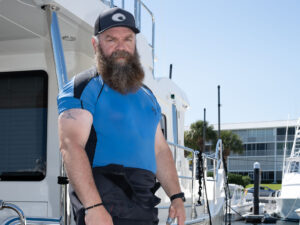
On Board With: Jeremy Dennard
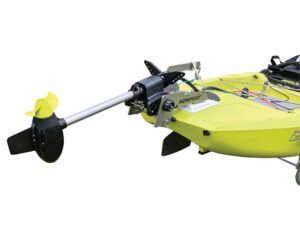
Installing an Electric Motor on a Kayak
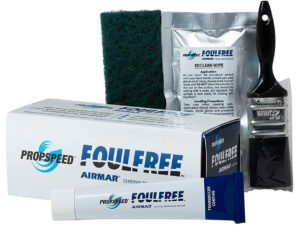
We Test: Foulfree by Propspeed

Catching a Swordfish on a PWC
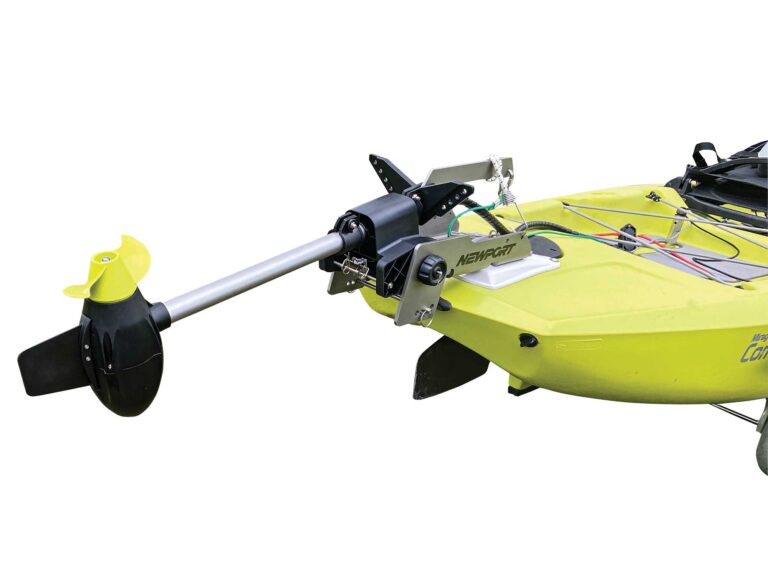
Boat Test: 2024 Formula 457 CCS

- Digital Edition
- Customer Service
- Privacy Policy
- Cruising World
- Sailing World
- Salt Water Sportsman
- Sport Fishing
- Wakeboarding
Many products featured on this site were editorially chosen. Boating may receive financial compensation for products purchased through this site.
Copyright © 2024 Boating Firecrown . All rights reserved. Reproduction in whole or in part without permission is prohibited.
Boat Fuel Consumption Calculator
Author: Calculator Academy Team
Last Updated: July 25, 2023
Enter the specific fuel consumption, horsepower, and fuel-specific weight into the calculator to determine the boat fuel consumption.
- BSFC (Brake Specific Fuel Consumption) Calculator
- Brake Horsepower Calculator
- Boat Speed Calculator
- Hull Speed Calculator
- Sailboat Value Calculator
Boat Fuel Consumption Formula
The following formula is used to calculate a boat’s fuel consumption.
- Where FC is the fuel consumption at max throttle (gallons/hour)
- Gas = .50 lbs per HP
- Diesel = .40 lbs per HP
- HP is the engine horsepower
- Gas = 6.1 lbs per gal
- Diesel = 7.2 lbs per gal
To calculate boat fuel consumption, multiply the fuel consumption at max throttle by the engine horsepower, then divide by the fuel specific weight.
What is a boat fuel consumption?
A boat fuel consumption is a rate at which the engine on a boat consumes fuel, typically measured in gallons per hour.
The fuel consumption depends on the horsepower of the engine, throttle level, and type of fuel used.
How to calculate boat fuel consumption?
Example Problem:
The following example outlines how to calculate the fuel consumed by a boat engine.
First, determine the horsepower of the engine. In this example, the boat has one engine with a horsepower of 400 HP.
Next, determine the specific fuel consumption and fuel-specific weight of the fuel. In this example, the fuel is gas so these values are .50 and 6.1 respectively.
Finally, calculate the fuel consumption at max throttle using the formal above:
FC = (SFC * HP) / FSW
FC = (.50 * 400) / 6.1
FC = 32.786 gallons per hour
To determine how much fuel would be used at half throttle/half horsepower, divide the result by 2.
32.786 / 2 = 16.393 gallons per hour


- Charter & Brokerage
- Yacht Design & New Builds
- Tenders & Toys
- Superyacht Events Calendar
- Career & Training
- Departments
- Superyacht Crew Finances
- Sustainability
- Shipyards and Marinas
- Health & Wellbeing
- Polar Region
- Our Services
- Meet the Team
West Nautical Fuel Calculator – How it Works
.png)
How does the West Nautical Fuel Calculator help Superyacht owners and charter clients budget for their holidays?
The West Nautical Fuel Calculator allows charter guests and yacht owners to calculate the fuel consumption and cost, based on their itinerary. Making it the easiest way to map your dream itinerary, while being able to calculate the yacht fuel costs.
So how does it work?
The fuel calculator has an interactive map. You can input the starting point as well as a destination onto the map. This will automatically populate the distance table. The next step is to enter the speed and fuel consumption of the yacht. Most yacht brochures will have information about the maximum and cruising speed as well as the fuel consumption. Which, is calculated at a number of litres per hour. The last step is to input the cost of fuel per litre. This is information that all captains and chief Engineers will have as they regularly bunker in similar locations. This will then calculate the total fuel cost of the trip and when each passage is calculated, will calculate the fuel cost for the charter. Each yacht will consume fuel differently for a number of reasons, the main reason being the size and make of the engines as well as the speed at which the yacht is able to cruise.
Click on the link to give it a go and try out some examples: westnautical.com/fuel-calculator/
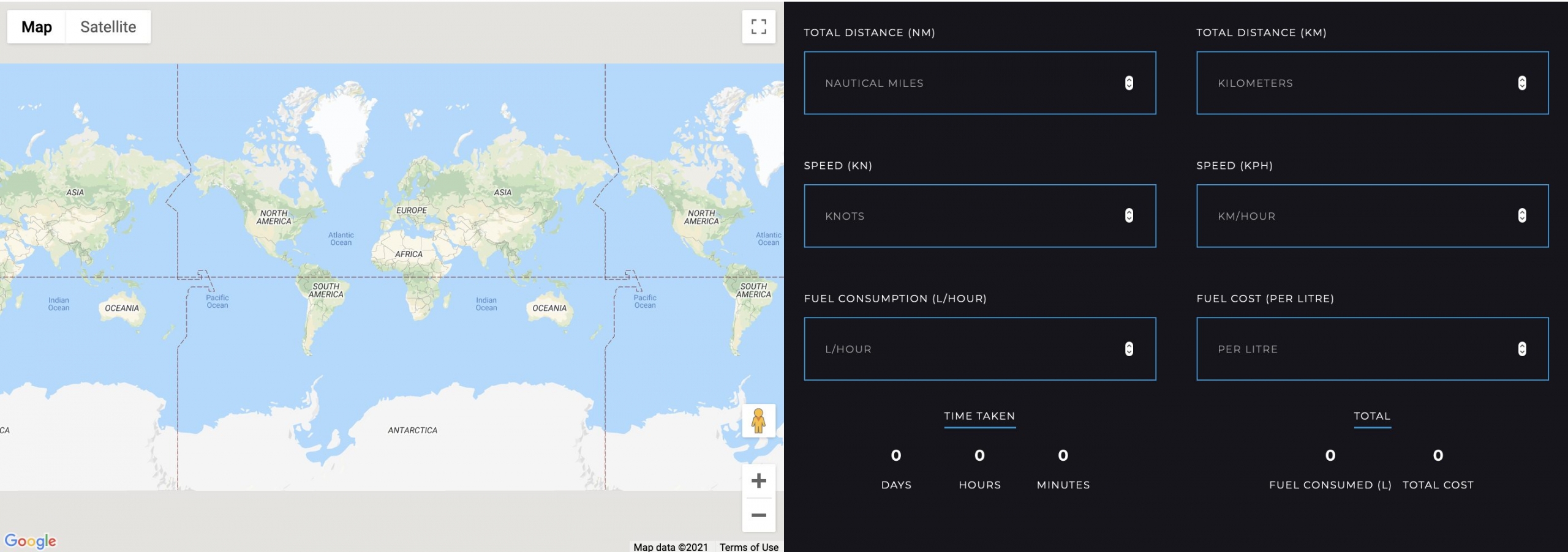
To plot points on the map, click with your mouse – this will automatically update the distance table. Then enter the speed, fuel consumption, and fuel cost to determine the total cost of the trip.
Here are some examples of fuel consumption:
1: A fast 30m yacht cruising at 20 knots (Lady Amanda) will consume roughly 400-500 l/hour.

2: A typical displacement yacht may cruise at 12 knots and consume 300 l/hour.
3: Some yachts can cruise at 10 knots (Firefly) and consume 100 l/hour.
Fuel prices can fluctuate, but typically fuel when cruising in the Mediterranean is between €0.80 – €1.20 per litre.
Have a go at using the West Nautical Fuel Calculator and let us know how it goes!
If you are interested in chartering a yacht, get in touch with West Nautical’s expert team on charter@westnautical.com or view their yachts for charter on their website
For help with yacht and destination-specific fuel, calculations get in touch with one of their client managers today: info@westnautical.com
To stay up to date with the latest superyacht news for crew, click here .

West Nautical
Related articles, the crew network – top jobs this week.
- Superyacht Language: Nautical Terms Every Crew Member Should Know
How To Keep Your 2024 New Year’s Resolution Onboard
Making your superyacht a winter wonderland on water this christmas.

Popular Posts
- Guest Cocktails: 2023’s Delectable Mixology
- 36m Phi Chase Boat ‘Phantom’ Launched By Alia Yachts
- Miami International Boat Show: Yachting Ventures & Seaworthy Collective Launch Blue Startup Pitch Event
- How We Can Improve The Oceans One Department At A Time
Superyacht Content
Social media influencer and digital brand expert.
Superyacht Content brings you the latest in social news for the superyacht industry.
Keep up to date with us across our social channels, and don’t forget to hit that share button!
- Superyacht News
- Superyacht Jobs
- Superyacht Marketing
Join our Newsletter
- Your Name First Last
- Your Email *
Copyright © 2023 Superyacht Content | Website Design by Zonkey
Privacy | Credits | Get in Touch

Boat Reviews
- Aquila Boat Reviews
- Aspen Boat Reviews
- Avalon Boat Reviews
- Aviara Boat Reviews
- Axopar Boat Reviews
- Barletta Boat Reviews
- Bayliner Boat Reviews
- Centurion Boat Reviews
- Charger Boat Reviews
- Cruiser Yachts Reviews
- Formula Boat Reviews
- Fountaine Pajot Reviews
- Freeman Boatworks Reviews
- Galeon Luxury Yachts Reviews
- Intrepid Boat Reviews
- Jupiter Marine Reviews
- Manitou Boat Reviews
- Native Watercraft Reviews
- Phenom Yacht Reviews
- Pursuit Boat Reviews
- Sailfish Boat Reviews
- Sea Ray Boat Reviews
- Sea-Doo Watercraft Reviews
- SeaVee Boat Reviews
- Solace Boat Reviews
- Windy Boat Reviews
- X Shore Boat Reviews
- Yamaha Boat Reviews
- Boats Specs
- Marine Pros
- Boat Insurance
- Boat Warranties
- Boat Transport
- Boat Towing
- Marine Forecasts

Your Ultimate Boating Resource

2024 Pursuit OS 445: An Overview
Boat safety 101: exploring the serenity and adventure of boating, the moment of truth – 6 signs you need a new boat, is it possible to wakesurf on a pontoon boat, 2024 aquila 47 molokai review, 2024 sea-doo switch 13 sport review, 2024 aspen c120 review, calculating boat fuel consumption for smart boating.
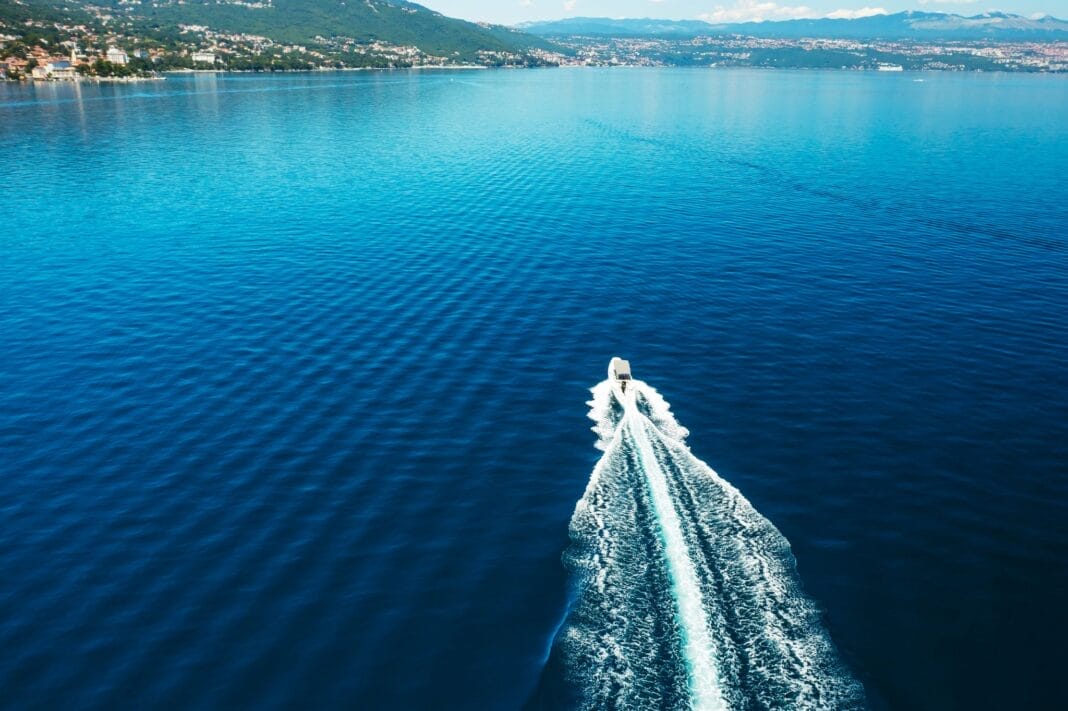
Efficiently managing fuel consumption is a critical skill for boaters, not only affecting the range of your vessel, but also impacting overall expenses. But unlike cars or trucks, calculating a boat’s fuel usage is more complex due to constantly shifting sea conditions.
In this comprehensive guide, we will dive into the intricacies of estimating and computing fuel consumption for boats, empowering you to make informed choices for an optimal boating experience.
Key Points for Fuel Consumption
Determining the amount of fuel your boat consumes holds several significant advantages:
Range Projection
Understanding your boat’s fuel economy–the amount of fuel needed per mile or nautical mile–helps anticipate the safe distance you can cover with a specific fuel capacity.
Cost Analysis
Calculating fuel usage offers valuable insights into operational costs, particularly when comparing different boats or marine engines for purchase.
Comparison Tool
Many boaters rely on fuel consumption charts or use boat tests as benchmarks for comparison. This allows for smarter decision-making when selecting a new boat or engine based on efficiency.
Due to the ever-changing nature of sea conditions, boat fuel efficiency is measured in gallons per hour (GPH). The metric used is pounds of fuel consumed per horsepower generated per hour, commonly referred to as ‘brake-specific fuel consumption.’
Keep in mind that gasoline weighs approximately 6.1 pounds per gallon, while diesel comes in at around 7.2 pounds per gallon.
The relentless hum of a well-tuned four-stroke gasoline engine can consume an impressive 0.50 pounds of fuel per hour for every unit of horsepower it churns out.
And let’s not forget the tireless diesel engine, which burns through 0.4 pounds of fuel per hour for each unit of horsepower it generates.
But be warned, these numbers only scratch the surface–factors like boat drag, sea conditions, and efficiency losses can greatly affect your fuel burn.
To navigate through this maze, use this formula to estimate your boat or engine’s fuel consumption:
GPH = (specific fuel consumption x HP) / Fuel Specific Weight
Gas = 6.1 lb. per gal
Diesel = 7.2 lb. per gal
The key to unlocking maximum horsepower lies in these formulas, optimized for the engine’s peak performance at wide-open throttle. But don’t be fooled–fuel consumption actually decreases during cruising speeds.
And with advanced electronic and direct fuel injection systems, efficiency is taken to a whole new level.
Unlocking Boating Performance
The roar of the boat motor and the number of miles it can go on a single gallon of fuel are crucial elements to consider while out on the water.
These two concepts, known as ‘boat motor pitch’ and ‘miles per gallon (MPG),’ hold the key to unlocking optimal boating performance. So pay attention, because your next adventure may depend on it.
Boat Motor Pitch
The pitch of a boat motor typically refers to the pitch of the boat’s propeller. The propeller pitch is the distance that the propeller would move in one revolution if it were moving through a solid, like a screw through wood. It’s measured in inches.
A higher pitch means the propeller is designed to move the boat further with each revolution, which can be efficient for speed but may reduce the engine’s revolutions per minute (RPM).
A lower pitch propeller will move the boat less distance per revolution but can increase RPM, potentially offering better acceleration and power for carrying heavy loads.
Choosing the right propeller pitch is crucial for optimal boat performance. It needs to be matched with the boat’s size, weight, and the motor’s power to ensure the engine operates within its recommended RPM range for peak efficiency.
Miles Per Gallon
MPG in the context of boats refers to the fuel efficiency of the boat. It indicates how many miles the boat can travel on one gallon of fuel.
Calculating MPG in boats is more complex than in cars due to variable factors like water conditions, boat weight, and hull design. A boat’s MPG can vary significantly based on these factors.
Higher MPG indicates better fuel efficiency, which is desirable for reducing fuel costs and environmental impact.
Boaters often look for ways to improve their MPG by optimizing the boat’s load, maintaining the engine, and using the boat at efficient speeds.
Assessing Fuel Usage and MPG
Begin by filling your boat’s tank to a precise level and recording the gallons added.
Then, set sail and take note of the distance traveled while considering sea conditions and cruising speed.
Upon return to the dock, refill the tank to the same level and record the additional gallons needed.
Using this information, you can determine the amount of fuel consumed during your trip and calculate your MPG using the formula: Distance Traveled / Gallons Consumed.
This equation is a valuable tool for determining the boat’s fuel efficiency and can be used to plan more efficient journeys in the future.
Many modern engines come equipped with gauges that display the total fuel consumption during a trip, as well as real-time updates on fuel efficiency to assist in saving fuel.
Maximizing Fuel Efficiency
The rumble of a boat motor is like a heartbeat to any avid boater. But did you know that how you trim your boat and manage fuel can make or break your entire experience on the water?
These two concepts are key players in maximizing performance and efficiency, leading you to smooth sailing and unforgettable adventures.
Boat Motor Trim
The trim of a boat motor refers to the angle of the outboard motor or stern drive in relation to the transom of the boat. Adjusting the trim changes the angle at which the hull meets the water.
Proper trimming can significantly affect the boat’s performance. When a boat is trimmed correctly, it runs more efficiently, achieving optimal speed and handling. The goal is to find the trim sweet spot where the boat planes smoothly on top of the water with minimal resistance.
Trimming the motor too low (in) causes the bow of the boat to sit lower in the water, increasing drag and reducing speed and efficiency. Trimming too high (out) can cause the propeller to ventilate, leading to loss of propulsion and potential engine damage.
Fuel Economy
Fuel economy in boating refers to how efficiently a boat uses fuel, typically measured in GPH or MPG.
Optimizing the trim of the boat can lead to better fuel economy. When a boat is properly trimmed, it reduces drag and allows the boat to move through the water with less effort and power. This efficiency translates into less fuel consumption for the distance traveled.
Additionally, a well-trimmed boat can also reduce engine strain and potentially extend the life of the motor.
Balancing Trim and Fuel Economy
Achieving the best fuel economy involves finding the optimal trim setting where the boat runs most efficiently. This setting varies depending on the boat’s design, load, water conditions, and speed.
Boaters often use trim tabs or power trim (adjustable with buttons or a lever on the throttle control) to adjust the trim level while underway, constantly fine-tuning for the best performance and fuel efficiency.
It’s important to monitor the boat’s performance indicators such as speed, RPM, and fuel consumption gauge, if available, to determine the most efficient trim setting.
Final Thoughts
Fuel up for success on the open seas by mastering your boat’s fuel consumption and miles per gallon. With this crucial knowledge, boaters can navigate their vessels with confidence and make informed decisions for efficient and cost-effective travels.
Don’t sail blindly–install a fuel monitoring system to track your consumption for ongoing management and worry-free long-distance cruises.
RELATED ARTICLES
Eco-savvy sailing: expert tips for reducing fuel costs and enhancing your boating experience, sea safety blueprint: constructing the perfect float plan for your boating adventures, latest posts, the top 9 reasons to maintain a meticulous boat log, don't miss, our newsletter.
Get the latest boating tips, fishing resources and featured products in your email from BoatingWorld.com!
What type of wood is used for pier pilings?
What is the difference between a dock and a floating pier, what is the proper technique for pulling a beginner wakeboarder, what does ‘no wake’ mean on a lake, what is the difference between wash and wake, 10 essential tips for fishing near private property, the benefits of using a drift sock: guidance for anglers, lure fishing: secrets for imitating live bait and attracting fish, explore the untapped depths of america’s best bass fishing spots, tackle your catch-and-release adventures with these 6 tips, outboard motor maintenance: tips for keeping your engine in top shape, the essential boat tool kit: tools every boater needs, diy boat building: 8 tips and tricks for building your own vessel, the art of miniature maritime craftsmanship: ship in a bottle, antifouling paints: a guide to keeping your boat shipshape, beginner’s guide to standup paddle boarding: tips and techniques, boating for fitness: how to stay active on the water, kayak safety: how to stay safe on the water, anchoring in a kayak or canoe: how to secure your small boat, 2024 yamaha 222xd review, 2024 sailfish 316 dc review, 2023 seavee 340z review, 2023 centurion fi23 review, gear reviews, megabass oneten max lbo jerkbait review, fortress anchors fx-7 anchoring system review, fortress anchors fx-11 anchoring system review, fortress anchors commando anchor kit review, fortress anchors aluminum anchors review, stay in touch.
To be updated with all the latest news, offers and special announcements.
- Privacy Policy
Log in or Sign up
You are using an out of date browser. It may not display this or other websites correctly. You should upgrade or use an alternative browser .
Fuel Consumption of Larger Yachts
Discussion in ' Boat Design ' started by Slimjim , Sep 14, 2012 .
Slimjim New Member
Hi to all and thanks from a lurker. I'm thinking of getting a larger motoryacht to live aboard,as the values of the 10-15 year old yachts have really dropped with the meltdown and what not. I have ocean front property,so docking is no problem. I have looked and emailed brokers,but can't find any info on consumption at lower speeds-it's not so much the amount as we will use it rarely- just need to know what kind of range I may expect for a 75-85' yacht like a Sunseeker. Any hints will help and thanks again. Jim
WestVanHan Not a Senior Member
Hi slim and welcome to the board. I've had those thoughts lately too..the prices have dropped,and any on the market have been so for years..so the owners need to get realistic. I have a small oceanfront cabin up the coast-but docking in front of it is not a good thing and as you know docking anywhere near Vancouver for something that big is very hard and $$$$$. Otherwise I'd be so tempted. Anyways,I was on a charter Sunseeker 84 Manhattan. Almost all of them came with the 1400hp Cat 3412-which is not a too desirable state of affairs. If they've been used to any of the hp potential they tend to have problem$$. Or when..and I mean "when" not "if" one of them drops a valve,a liner fails,a skirt breaks,or the aftercooler leaks and breaks your pistons-pull it out and throw in a reman Cummins QSB11 as the main driver. Anyways I remember at 10 knots/1000 rpm both engines/ it was 90 litres an hour. I don't see why not at 7-8 knots, you'd be down to 50-60 litres an hour. You'd want to open them up a couple minutes every hour. At 22 knots it's 400+ litres an hour. Look into Fairline,Princess/Viking-the Italian boats seem to be more expensive.
TANSL Senior Member
Search with Google catalogs of engine manufacturer. They indicate consumption, generally, in grams / hp-hour. (about 200 gr/hp-h) They do not say that consumption occurs under ideal navigation conditions, with the engine at 80%, but is data that can be used with caution. See attached example.
Attached Files:
Yamaha FL250AETU.doc
Trying to be helpful tansl, but without knowing how much hp it takes to move the yacht at a speed-charts and specs are useless.
WestVanHan said: ↑ Trying to be helpful tansl, but without knowing how much hp it takes to move the yacht at a speed-charts and specs are useless. Click to expand...
Tad Boat Designer
Princess V72 C32 Cats 1000 RPM = 11.3 knots and 40gph = range of 295 miles Sunseeker 70 1550 HP MANs 1000 RPM =10 knots and 23gph = 500 miles range 1250 RPM = 11 knots and 42.5gph = 300 miles range 1500 RPM = 18.3 knots and 51gph = 399 miles range (best mpg) Those are US gallons
Squidly-Diddly Senior Member
not to thread jack, but how about two engines on one shaft, so..... you aren't lugging a big diesel at lower speed, but still got full power with both engines running. Ideally, I'd have 6 and 12 cyl engines, so I'd have 3 possible power levels....6, 12 or 18 cyls.
mydauphin Senior Member
If you have to ask... You cant afford it. Owning a big yacht is not about fuel, everything else is expensive too. Keep it below 50' and you will save tons of money.
mydauphin said: ↑ If you have to ask... You cant afford it. Owning a big yacht is not about fuel, everything else is expensive too. Keep it below 50' and you will save tons of money. Click to expand...
TANSL said: ↑ Well, you tell me how you will meet the consumption?. Or do you think that yachts consume according to their length? B.R. Click to expand...
OK WestVanHan, sorry if I said something wrong but I do not understand why we can not use information that the engine manufacturer provides. Cautiously or wrongly, is often the best information we can provide. On the other hand, you're right, not only are the main engines that consume fuel, we must take into account all other consumers of fuel in the boat. So I think that neither yours nor my data can answer this question. Finding a yacht consumption, and therefore its autonomy, is quite complicated. But. if the manufacturer gives us a data, why not use it? It's not that I try to help but not answering the question. It is, in my opinion, that if we do not use data as I propose is very difficult to estimate the consumption / autonomy of a ship, with rigor.
TANSL said: ↑ So I think that neither yours nor my data can answer this question. Click to expand...
Jim; forgot to mention there's been a Sunseeker 94 docked here in Vancouver for 12-13 years.I know it had very very rarely been away from the dock up to 2009. I walked and biked past it almost every day. And the last 4 years AFAIK it' hasn't been away much either,I'd guess for haulouts or runs. It was on the market continuously until a couple years ago-but I'd guess they still think it's worth the $4M they were asking for it in 2001. Oh and the tankage on the 84 was 7500 or so..so at 10 knts you should go ~850 miles to empty-more than enough to circumnav. the Island and spend a year parked in the Broken Group if you wanted.
FAST FRED Senior Member
"not to thread jack, but how about two engines on one shaft, so..... you aren't lugging a big diesel at lower speed, but still got full power with both engines running." Ideally, I'd have 6 and 12 cyl engines, so I'd have 3 possible power levels....6, 12 or 18 cyls. " The past 40 years or so the US Navy has been installing two engines tied to a gear box and single shaft on landing craft. My preference would be for a smallish diesel to operate efficiently at 80% power 90% rated RPM for long range cruising, and a stock motor for the times to make a big wake and de-fuel the boat rapidly. 3-71 and 6-71 or 80Hp Deere tractor with Intl DT 466 ,,more Modern , might use less fuel Engine can be disconnected under way , but requires shut down to engage to reengage either engine. No big deal.
- Advertisement:
FAST FRED said: ↑ "not to thread jack, but how about two engines on one shaft, so..... you aren't lugging a big diesel at lower speed, but still got full power with both engines running." Ideally, I'd have 6 and 12 cyl engines, so I'd have 3 possible power levels....6, 12 or 18 cyls. " The past 40 years or so the US Navy has been installing two engines tied to a gear box and single shaft on landing craft. My preference would be for a smallish diesel to operate efficiently at 80% power 90% rated RPM for long range cruising, and a stock motor for the times to make a big wake and de-fuel the boat rapidly. 3-71 and 6-71 or 80Hp Deere tractor with Intl DT 466 ,,more Modern , might use less fuel Engine can be disconnected under way , but requires shut down to engage to reengage either engine. No big deal. Click to expand...
Fuel consumption opinions
rearranging fuel tanks reduce stern weight
Help Needed with stringer mods to fit Underfloor fuel tank
Reality Check Please- Fuel Tank
Digital fuel metering
Convert No-EPA fuel tank to EPA
Fuel vent posizion and ce/iso rules.
Replacing One Fuel Tank with Two
Integral fuel Tanks
LB ratio & powercat fuel efficiency
- No, create an account now.
- Yes, my password is:
- Forgot your password?

- Management Team
- Carpentry & Joinery
- Custom Furniture
- Floor Board
- Gangway / Paserella
- Custom Made Mug Holders
- Deck Caulking Replacement
- Paint Process
- Awl Grip Paint
- Aluminium Paint
- Yacht Paint
- Bottom Preparation
- Antifouling
- Non-Sleep Deck Paint
- Barrier Coat
- Steel Paint
- Grit Blasting
- Sun Odyssey 45
- Jeanneau 42 DS
- Carbon Manufacturing
- Balsa Core Repearing
- GRP Damage Repearing
- GRP Modification
- Bow Thruster Installition
- Carbon Repearing
- Infusion Productions
- Post Curing Application
- Delamination Repairing
- Osmosis Treatment
- Interior Illumination
- Under Water Light Installition
- DC Charge System Upgrade
- Navigation Equipment
- Managment System Application
- Deck Port Panel Design
- DC Consumption Account
- Engine Remote Control
- Renew Standing Rigs
- Stepping / Unstepping Mast
- Rig Repairing
- Mast Head Report
- Mast Foot Report
- Mast Coller Preparation
- Chain Plate Check and Report
- Spartite Application
- Mast Electric Works
- Furling Installation
- Hydraulic System Services
- Easy Tracing System Production
- Splicing Works
- New Sail Supply
- Sail Winterizing Maintenance
- Cruising Shut Systems
- Carbon Composite Works
- Deck Hardware
- Valeting Works
- Conservation Works
- Winterizing Sail
- Main Engine
- Battery Charge
- Life & Raft
- Fire Extinguisher
- Dehumidifiers Service
- Bilge Cleaning
- Winter Cover
- Shrink Wrap
- Out Board Maintenance
- Portable Hangar
- 316L Stainless Steel Bow Protection Plate
- Mechanic Engineering
- Technical Service
- Bonning Electronic Control Services
- Engine Performance Analyze
- Warranty Subjects
- Recommending
- New Engine Installition
- Spare Parts
- Periodic Maintenance
- Caravel Shaft Brearings
- Fluiten mechanic seals
- Offshore Service
- Mobile Service
- Project Managment
- Architect & Engineering
- Development Projects
- New Boat Equipment Review
- Used Boat Review
- Assessing the Damage
- Personnel Qualification Review
- Yacht Transfer
- 2nd hand boat
- Nimbus 370 Coupe
- 13 Mt. Sailing Yacht
- Princess 85
- Sunreef Supreme 68
- Prenses 35 Mt.
- Bougainvillaea 62
- Sunseeker 76
- Princess 64
- Bavaria 2010 Criser 55
- Sunseeker Manhattan 60
- Ferretti Custom Navetta 33
- Catamaran Salina 47
- Beneteau 57
- Hallberg Rassy 37
- Fairline Squadron 680
- Hallberg Rassy 43
- Cardinal 46
- Hallberg Rassy 382
- Lagoon 450F
- Outremer 5X
- Leopard 27 Mt
- Look after and winterising works
- Catamaran Manufacturing
- HR 352 MODEL
- SY SUN ODYSSEY 47
- CARDINAL 46
- S/Y BENETEAU 57
- 65 ft Sailing yacht
- 24 M Wooden Gulet Sailing Yacht
- 12 M Wooden Sailing Yacht
- 17 M Wooden Motor Yacht
- Beneteau 361
- Sun Odyssey 42i
- Sun Odyseey 47
- Halberg Rassy 352
- Sunseeker Predator 74
- Halberg Rassy 37
- Beneteau Oceanis 393
- Halberg Rassy 382
- Ferretti Navetta 33 Customline
- Aluminium 60 feet Custom Sail
- Benetti 115
- X yacht 562
- Sunseeker 84
- Ferretti 225
- Riva rivarama Super
- Oceanis 42CC
- Grand Banks Classic Sedan
- Rivama Super
- Couach Yachts 35
- Wooden Gulet
- Ferretti Custom Line 33
- Custom Wooden Sailing yacht
- Custom GRP Service Boat
- Sunseeker Manhattan 70
- Apremare Maestro 56
- Madera Ribs 16 Mt.
- Hudson Force 50
- 13 Mt. Custom Sailing Yacht
- Beneteau 38
- X Yacht 562
- Eurotrawler 17.5
- Nimbus 370 coupe
- Sunreef 60 Catamaran
- 30 M Custom Sailing Yacht
- Grand Banks 32 Sedan
- 40 M Custom Sailing Yacht
- Ferretti Custom Line Navetta 33
- Princess 23 M
- 13M Sailing yacht
- Fairline 57
- Finngulf 44
- Gelcoat Restore
- Composite Repair
- Hoek Design Refit
- Farr 50 Refit
- Yacht Refitting
- Vacuum Infusion
- Composite Repairing On The Bow Keel
- Electrical Control Panels
- Additional DC Alternator
- Engine Rectification
- Custom Product
- Teak Renewing
- Mast & Boom Paint
- Hull Application
- Non-Slip Surface
- Mast Replacement
- Mast Reparing
- Propulsion Repair
- Custom Productions
- Adjustable Davits
- Dinghy Gallery
- (Türkçe) Nasıl bir tekne alayım?
- Names of the Wind – Compass Directions in 7 Languages
- Turkish names of Aegean Islands
- Mustafa Pasa
- The “Grand Wind” in the Gökova Körfezi
- “Yayla Tepmesi” or the Katabatic Winds of Mt. Kiran
- Piri Reis in “Bahriye (Seamanship)” “The Ceramic Gulf Explained”
- Ottoman Sailing Ships (A remarkable book)
- Turkish Water
- Uluburun II
- Skylax: A “Rooster” from Gölköy
- (Türkçe) Sıcak daldırma galvaniz nedir?
- (Türkçe) Taksan TTU 500 Torna İlerleme Mekanizması
- (Türkçe) Cıvatalar için önerilen çevirme momentleri
- Rudder Repair
- Radar Mast Polyester Repairs
- (Türkçe) Dümen Skegi Üzerinde Kapsamlı Onarım
- (Türkçe) Zehirli boya tatbiki ile ilgili bilgiler
- (Türkçe) Kum Raspası
- No.01 Keel Repairing Gallery
- No.02 Repair of Balsa and Core Osmosis Gallery
- No. 03 Bow thruster Installation Gallery
- No.04 Teak Deck Renewing and Mast/Boom Repainting Gallery
- Steel Keel Preparation
- Seacock Installition
- FAQ Procedures
- How To Obtain a Residence Permit
- Ports of Entry of Turkey
- “INSTRUCTIONS TO FOREIGN FLAG PRIVATE YACHTS” as printed on the cover page of the Turkish Transit log.
- Some details to be considered when sending goods to yachtWORKS from abroad
- Annotations to the Customs General Declaration
- Exclusion Clause
- Turkish Coast, Zones with SCUBA Prohibition
- Turkish Transit log
- 2023 Relunch
- Relaunched 2022
- Relaunched 2021
- Relaunched 2020
- Relaunched 2019
- Relaunched 2018
- Relaunched 2017
- Relaunched 2016
- Relaunched 2015
- Relaunched 2014
- Electrical Works
- Propeller polish
- Turgutreis / Bodrum
Fuel consumption and range values for motoryachts
With sample measurements on a grand banks 36 my trawler data source: powerboat & motoryacht magazine.
We all know, we all hear, that consumption, range, noise and engine wear are strongly related to the engine revolutions. The data below show that these relations are beyond the imagination of most of us.
All what has been done is that a boat was run with varying engine revolutions and consumption, speed and noise were recorded.
1. Speed of the vessel is the variable least depending on engine revs. When the engine revs are 1000-1 speed is 6.3 knots. When the engine is revved up to 2650-1 , the speed has increased to 15.7 knots. 2. Range, way made good per unit fuel and hourly consumption are highly dependent on the engine revs. As an example, while at 1000-1 revs the hourly fuel consumption is 7.6 liters. At 2650-1 revs this has increased to 84.9 liters. Thus, the hourly consumption has increased more than TEN fold. At the same time, range and way made good per unit fuel has decreased FIVE fold. At this example the “good” revs are 1500 – 1750 revs. Specially the green curves show the “hump” at these revs. Above these revs the range drops more significantly.
In summary, whoever runs his/her engines calmly, reduces engine wear, saves money and has the comfort of a larger range. Whoever “beats” the engines harm the environment and themselves..
The speed has been measured as average of two direction by radar.
Source: Powerboat & Motoryacht, January 1996, page 92
- Destinations
How to calculate yacht fuel cost – The boat fuel cost calculator
When you decide to enjoy a charter , there are many things you have to consider, not only when and where and whom you wish to join the party. I’m talking about the costs and expenses you will have during this memorable holiday with your loved ones. Depending on what type of vessel you are about the rent and the destination you will discover (as every place has its prices, pros, and cons), you will have a different bill at the end of your cruise .
How much cost chartering a yacht?
The most common questions we receive from our customers before they embark aboard the selected yacht they booked with us for their charter are:
- What does the price include?
- What is APA?
- What does APA stand for?
- What are the extras?
- How much is VAT?
- Can I have an estimate of the extra costs and expenses?
- How much will I spend in terms of fuel?
- What does the fuel boat cost?
- How to calculate fuel boat cost ?
- What is the price to dock the yacht at the marina?
Fill the below form to receive instantly the estimate of fuel cost for your charter
Javascript is disabled on your browser. Please enable it in order to use this form.
FIND YOUR BOAT
Your form has been submitted.
Thank you for your request. Our team will answer to you within 24 hours. I you have an urgent request then you can also call us on +39-3343600997.
We faced problems while connecting to the server or receiving data from the server. Please wait for a few seconds and try again.
If the problem persists, then check your internet connectivity. If all other sites open fine, then please contact the administrator of this website with the following information.
TextStatus: undefined HTTP Error: undefined
Some error has occured.
Our expert Charter Managers are glad to assist you with all the questions, clarifications, thoughts, and doubts you may have from the boat’s selection to your charter’s arrangements until the disembark. We always reserve transparent and clear 24/7 assistance to our new and repetitive clients, without surprises.
How do I calculate yacht fuel cost?
When you charter a power yacht , the most critical cost to support is for sure fuel .
When you rent a sailboat or hire a catamaran , don’t forget about the fuel cost for generators , the outboard engine of the dinghy. It would be a different cost at the end (definitively lower than aboard a motor yacht), but pay attention to air conditioning, especially when you spend the night at anchor.
Yacht fuel calculation: how it works
It’s time to take a map and find on it all the spots and destinations you wish to reach! Keep in mind that you can predict the weather conditions only 10 to 7 days before embarking.
Prepare your sailing itinerary .
Your sailing route will depend on many factors, as the engine power and cruising speed of the yacht, the weather conditions, and the nautical miles you intend to navigate. Naturally, you will have to be informed about the actual market price of the fuel in the destination you will sail to have the right or most approximate calculation of the boat fuel cost .
Together with the assistance and suggestions of our sales department, our experienced technicians created an advanced, quick, and efficient tool for the yacht fuel calculation that we call the “ Boat fuel calculator .” This tool allows you to have a concrete and actual analysis of the yacht fuel consumption and price, starting with your itinerary plan on the map to the final result.
Let’s begin: select the point of embarkation of your charter on the map. Now continue pinning all the beautiful spots you want to reach by boat during your yacht charter (as you can see, the calculator automatically updates the number of nautical miles) to disembark. You will obtain the total number of miles.
Calculate the nautical miles
Naturally, you can choose the unit of measures (nautical miles, miles, km): in this case, it would be the nautical miles and, every time you pin a new destination on your map, from the embark to the disembark, the tool updates the total number of miles cruised.
Now that we have the total number of miles, mandatory to calculate the boat fuel cost of our cruise. We need to know the yacht’s cruising speed, the engine consumption, and the market price of diesel in our next sailing destination.
Engine power and consumption
Now that we have the nautical miles, we need to know the engines’ power (the hp) and the real engine consumption of the boat we rent to have the actual yacht fuel calculation .
The last essential element we need to obtain the yacht fuel cost of our charter is the market price of gas in the destination we will sail. To have the diesel’s actual merits, you can consult many updated webpages of marinas and fuel bunkers, which continuously report the existing fuel prices day by day. (You can also check at https://www.marineyellowpages.com/ )
The fuel consumption formula
What we are looking for is the expense of fuel we will have during our cruise.
Now that we have all the information we need for the yacht fuel calculation, and so:
- Total nautical miles;
- Engine consumption;
- Cruising speed;
- The market price of gas;
We can proceed with the real boat fuel calculator using our formula.
Firstly, we need to know our charter’s travel time; I’m referring to the cruise duration. The formula to obtain the cruise duration is determined by dividing the number of nautical miles by the number of knots (the boat’s cruising speed).
For example, if the nautical miles we are planning to navigate are 150 nm and the cruising speed of our yacht is 18 knots:
150 nm / 18 kn = 8,333 hr
So if we want to cruise in a total of 150 nautical miles with a cruising speed of 18 knots, we will take about 8,333 hours. You will always have to consider the sea and weather conditions, which will influence the engines’ consumption.
And now that we have the “time,” the “duration” of our charter? How to calculate the yacht fuel cost?
If the engine of our boat consumes 250 lt/hr, we have to multiply the time of our cruise, so in this case, 8,333 hr by the boat fuel consumption, so by 250 lt/hr:
8,333 hr / 250 lt/hr = 2.082,50 lt
2.082,50 are the liters we consume cruising for 8,333 hr with engine consumption of 250 lt/hr. Now we have to multiply the number of liters just obtained by the market price of fuel, that we can suppose at 1,50 Euro/lt :
2.082,50 lt x 1,50 Euro = 3.123,75 Euro
Let’s resume the “magic formula” for yacht fuel calculation. If your sailing itinerary contemplates 150 nautical miles at a constant cruising speed of 18 knots, 250 lt/hr consumption, and marine diesel cost of 1,50 Euro/lt, at the end of our yacht charter, we will have a bill of 3.123,75 Euro.
The calculations of boat fuel cost are always approximate and depend on sea and weather conditions and atmospheric and natural events.
Our professional sailing tips and recommendations
Our team is always pleased to assist you, providing free 24/7 professional support for your charter arrangements and customizing your charter and journey. Feel free to contact us and get our advanced sailing tips and recommendations about your next charter: sailing itinerary, best bases, and marinas, where to spend the night at anchor, fuel bunkers, ATM and exchange, transfers from/to airport, groceries, and markets, restaurants and excursions, activities for kids and family, private celebrations, wedding, and corporate events, and much more.
Send us an email at [email protected]
Call or or text us (also on WhatsApp) +393343600997
Top sailing destinations
Yacht charter Italy – Sardinia yacht rental – Seychelles catamaran charter – Luxury yacht charter Thailand – Boat charter Caribbean – Catamaran charter Philippines – Greece yacht charter – Catamaran charter Mykonos – Boat hire Ibiza – Yacht rental Sicily – Amalfi yacht charter – Cannes yacht charter – Maldives catamaran – Cannes yacht charter
SEND NOW YOUR ENQUIRY FOR YOUR NEXY YACHT CHARTER WITH YOUR BOAT HOLIDAY:
RECENT POSTS
When is the Best Time to Book a Yacht Charter?
144′ 11” (44.17m) heesen yacht bliss 15% discount on may 2024 charters, sunreef 80 viva la vida offers a discount of 10% on the last week available in st martin, from 19-26 march 2024, 118′ 1”/35.97m intermarine savannah xoxo available for easter 2024 in south florida or the bahamas.
Share this Post
- Compare Yacht
- Azimut World
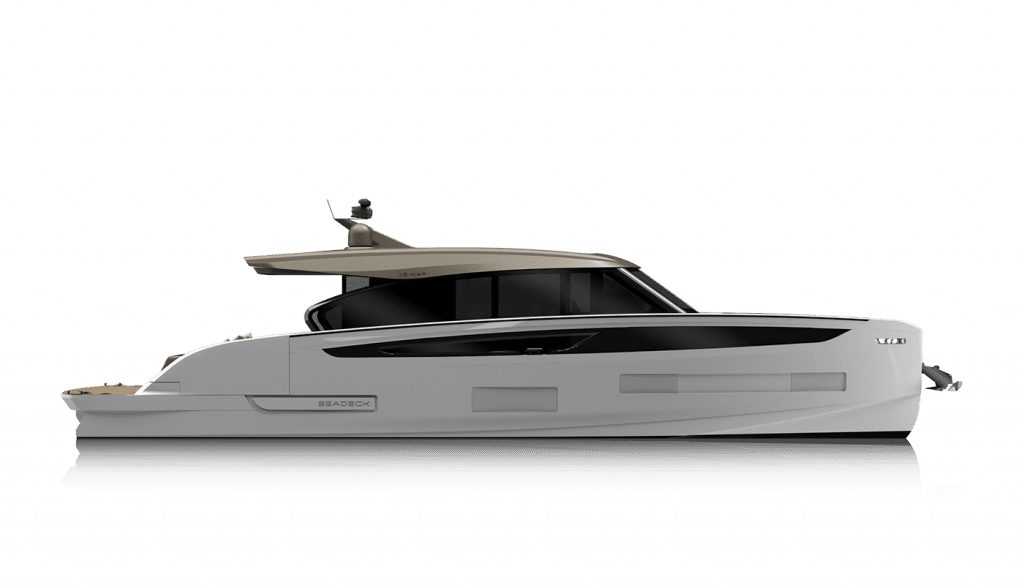
Find a dealer
Charter club, news & events.

BETWEEN SKY AND SEA
The outdoor spaces are oases of relaxation, with sunbathing and lounging arrangements designed to enhance the all-encompassing experience of the sea.
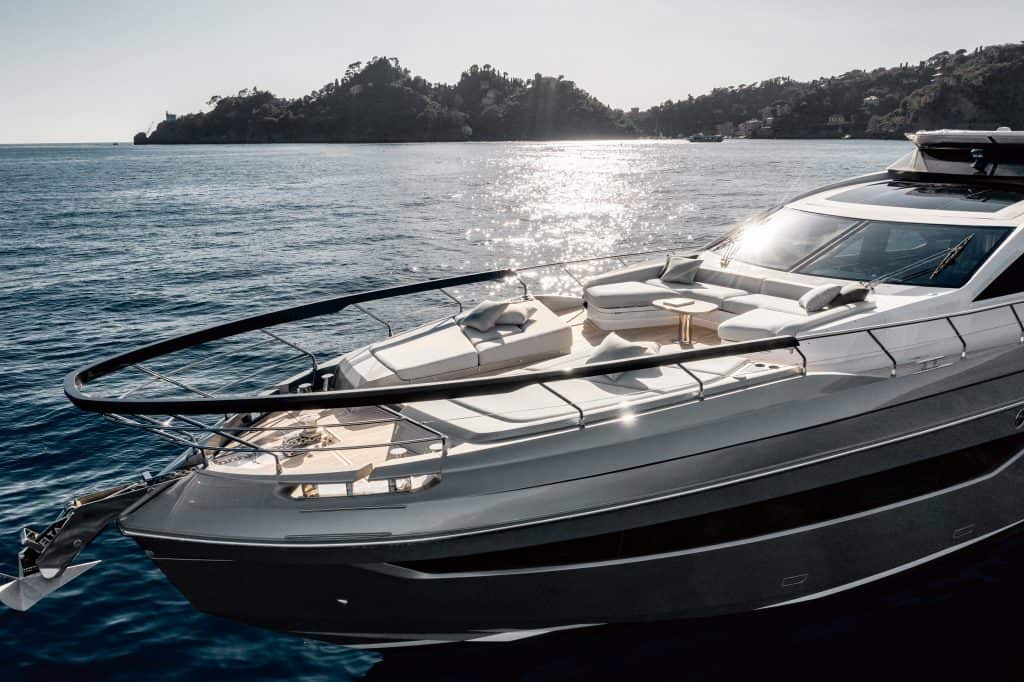
TOY STORAGE FOR ALL-DAY PLAY
To offer a double garage that can accommodate both the tender and a jet ski, it was necessary to undertake a careful study of the use of space, optimizing each of the technical and living areas with an obsession to detail.
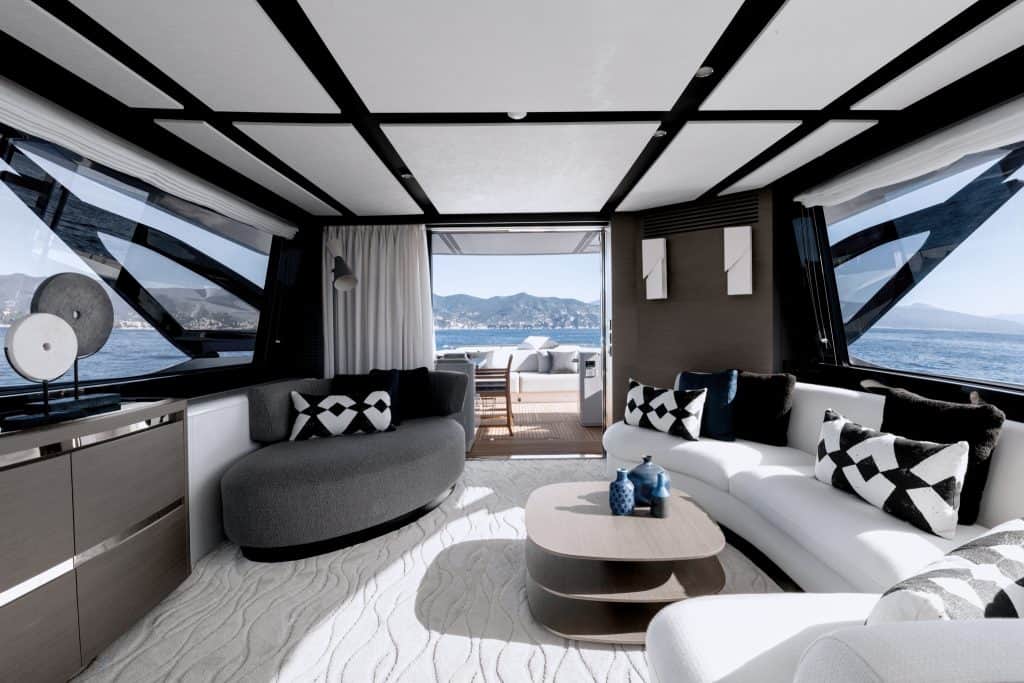
A LIBERATED WAY OF LIFE
A careful attention to the use of space on board led the designers to separate the galley on an intermediate deck, freeing up the bright main deck to expand the guest living and dining arrangements.
CONFIGURED FOR COMFORT
Guests are surprised by the unprecedented layout, which offers four comfortable cabins. It’s possible through the advanced triple pod propulsion system, which comes with a more compact engine room.

OUR ADVANCED TOOLKIT
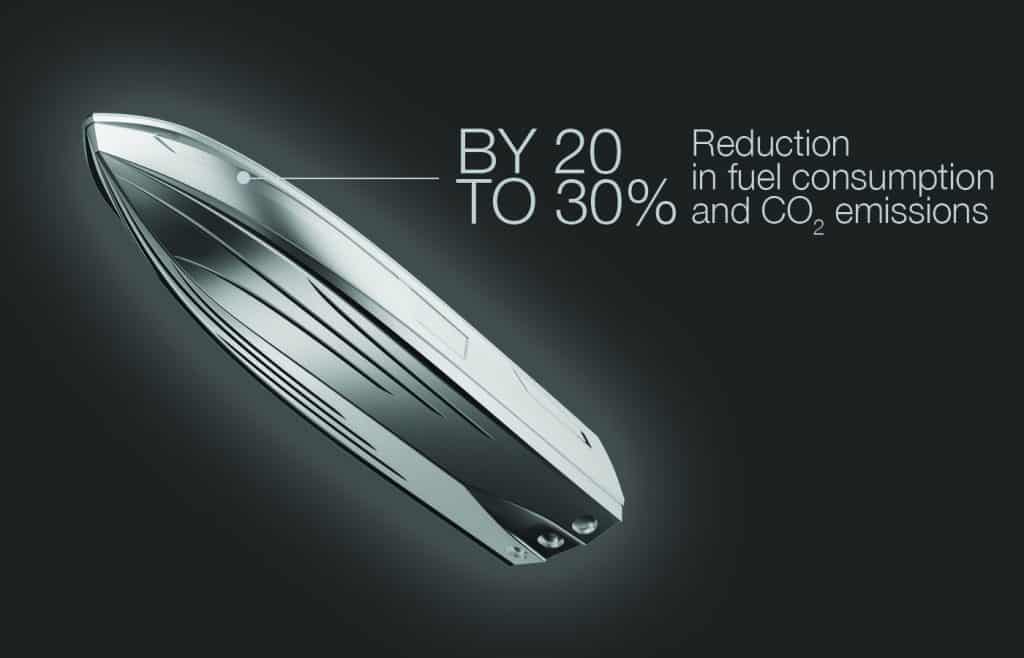
TRIPLE POD PROPULSION COMBINED WITH CARBON FIBER
The adoption of triple Pod propulsion, combined with the optimization of the water lines and the extensive use of carbon fiber, reduces fuel consumption and CO2 emissions by 20 to 30%* in the main speed range.
*compared to vessels of the same weight and size with a traditional hard-chine hull and shaft line propulsion.

Azimut’s pioneering use of carbon fiber lamination goes beyond pure performance. The Carbon Tech Generation offers expanded volumes onboard, while maintaining excellent dynamic stability and perfect handling. Preserving the yacht’s low center of gravity, the carbon fiber was focused on the upper parts of the yacht, lightening the laminated components by up to 30% and reducing the natural roll momentum up to 15%.

Automated interceptors optimize the trim at every speed to maintain ideal hydrodynamics for performance and efficiency, at the same time negating any lateral imbalance due to sidewinds or weight distribution. With the pilot’s peace of mind assured, the driving experience is simpler and more enjoyable.
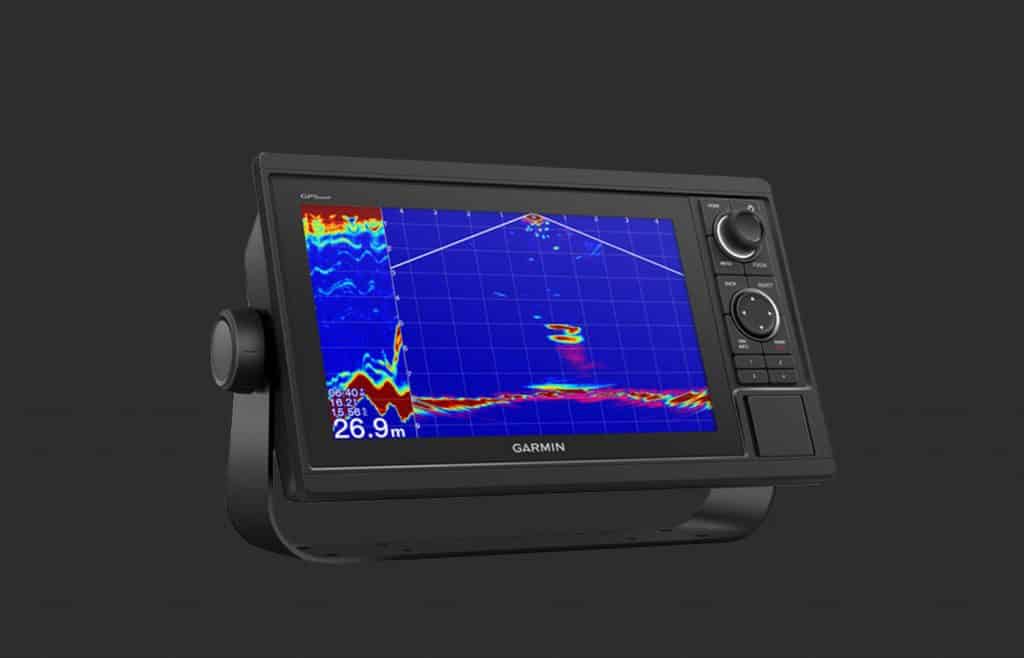
The integrated control system by Garmin has been customised to increase control potential: from engine data and alarms, to bilge and water discharge pumps, tank levels and engine room ventilation, right through to the sound system and the air conditioning units. The system can be accessed from both helm stations and remotely from a tablet.

The Joystick acts as an analog for the yacht, offering intuitive, one-handed control in every situation. When the yacht is stopped, moving the Joystick forward or back, side to side, and twisting clockwise or counter-clockwise activates the engines to mimic that motion. It’s the easiest way to pull off precise maneuvers.
When Joystick Driving is activated, the autopilot is immediately engaged. For easy course correction, the driver may briefly twist the Joystick for 1 degree in that direction or twist and hold for 10 degrees. The Autopilot keeps a forward course after the Joystick is released.
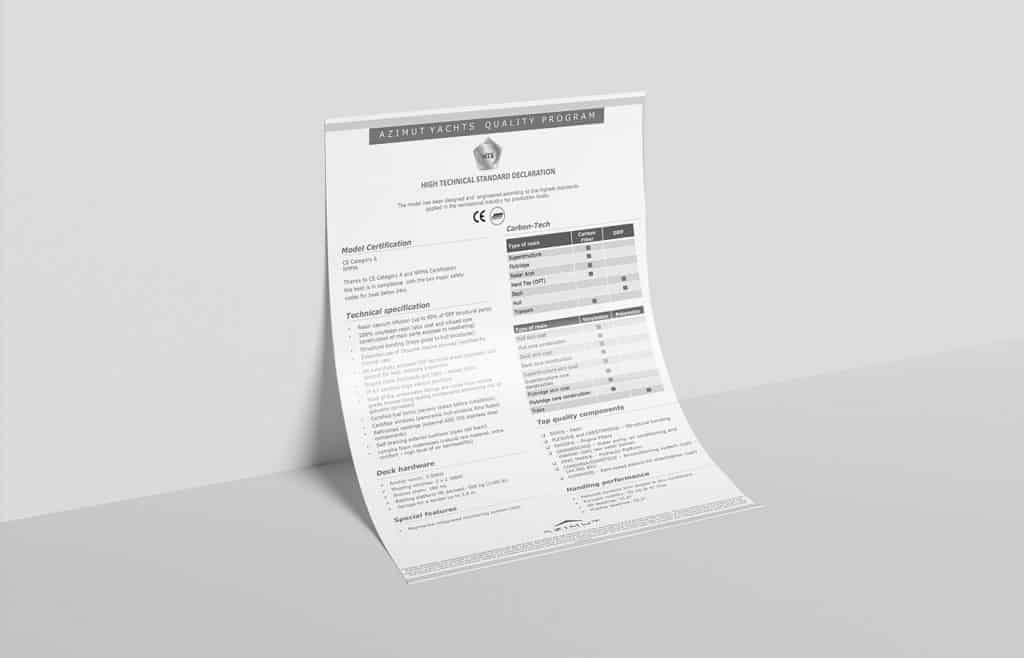
This yacht’s design and engineering meet the highest standards for production recreational vessels. Azimut Yachts issues a declaration of the premium materials, advanced technology and rigorous testing procedures.
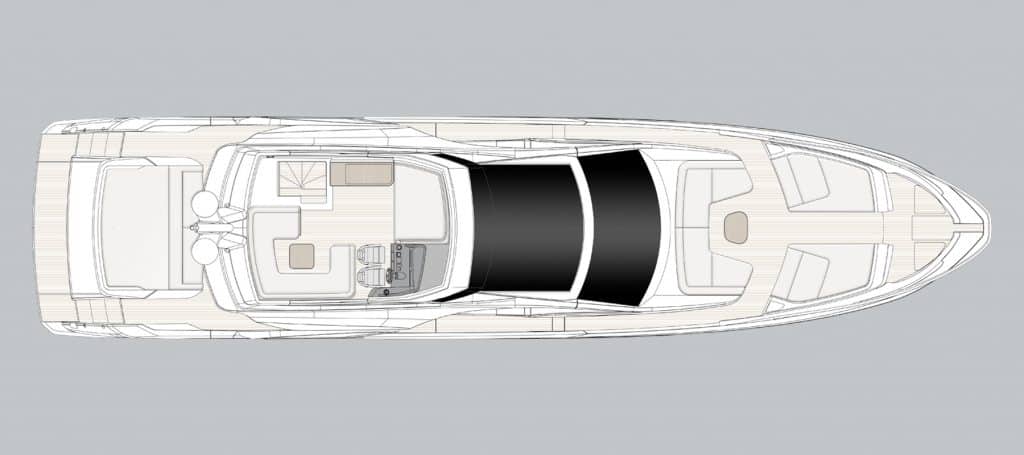
S8 AT A GLANCE
- Length overall (incl. pulpit) 24,63 m (80’ 10’’)
- Beam max 5,55 m (18’ 3’’)
- Draft (incl. props at full load) 1,75 m (5’ 9’’)
- Displacement (at full load) 57,68 t (127161 lb)
- Building material GRP + Carbon Fibre
- Exterior designer Alberto Mancini
- Interior designer Francesco Guida
- Hull designer P.L. AUSONIO Naval Architecture & Azimut R&D Dept.
- Builder Azimut Yachts
- Keel Planing, deadrise 14° at the stern and 20° amidship
- Certifications CE A; NMMA
- Cabins 4 + 2 crew
- Berths 8 + 2 crew
- Head compartments 4 + 1 crew
- Engines 3 x VOLVO IPS 1350 (1000 hp)
- Maximum speed (test load) up to 34 kn
- Cruising speed (performance test mass) up to 28 kn
- Fuel capacity 4000 l (1057 US Gal)
- Water capacity 1100 l (291 US Gal)
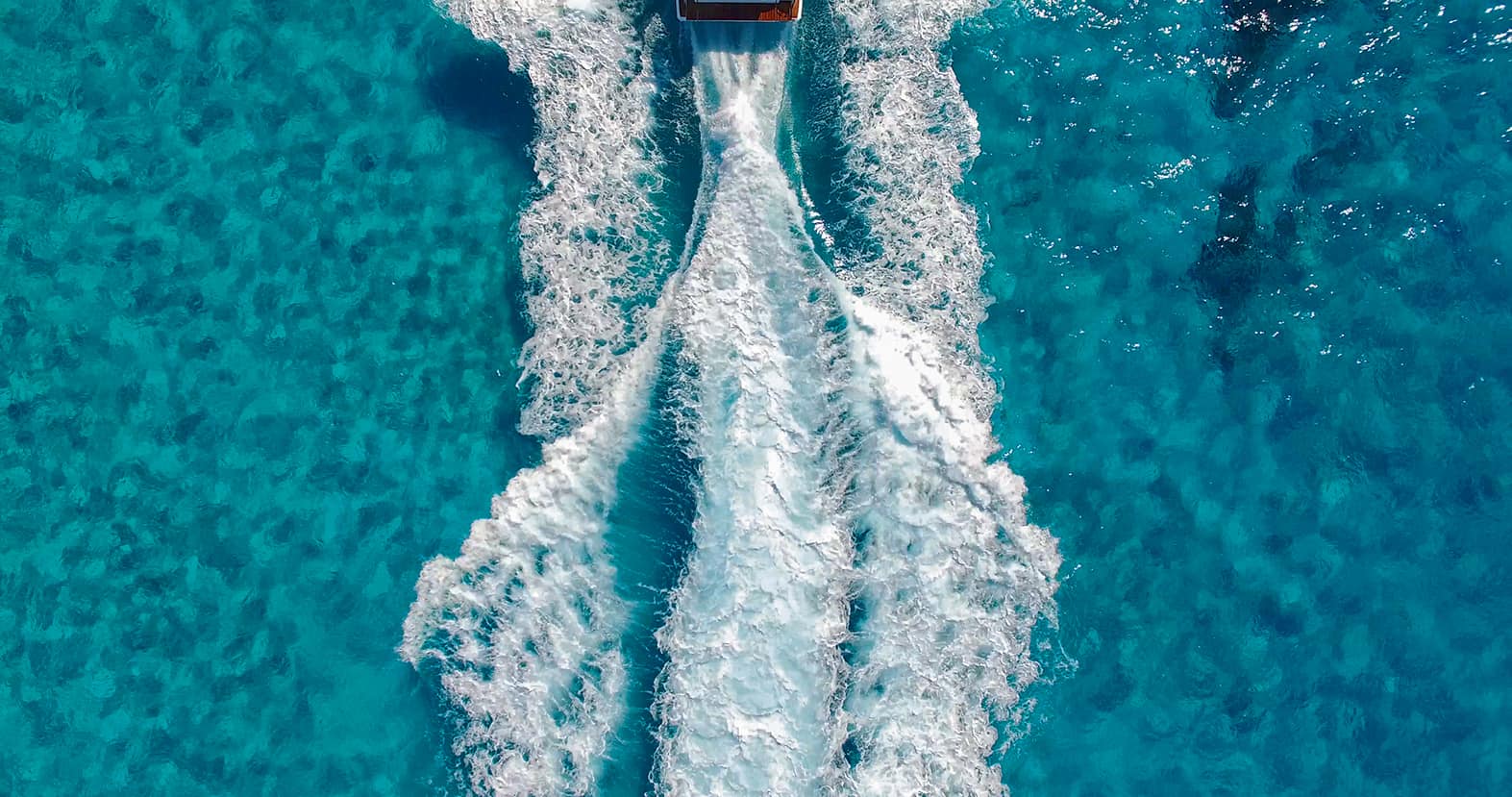
Azimut updates
Choose to remain updated on Azimut’s yachts, launches, shows and more by subscribing to our newsletter.
I have read Azimut Benetti s.p.a. privacy notice and:
I agree to receive the newsletter about Azimut’s world from Azimut Benetti s.p.a.
You will soon receive your first newsletter with the latest Azimut news.
Follow us on WECHAT

Please keep me updated on everything about this yacht.
Non venderemo mai i tuoi dati, manterremo i tuoi dati al sicuro e non condivideremo mai i tuoi dati con terze parti per scopi di marketing. You can update your contact details at any time by emailing [email protected] or change your mind by clicking “unsubscribe” in any email you receive from us.
I agree to receive, via email, informational material regarding Azimut products from Azimut Benetti s.p.a..
We have successfully received your request and will contact you shortly.
Our newsletter will provide you with the latest news, on boat launches, previews and shows.
Complete the form below to be contacted by a dedicated dealer who will gladly respond to your questions and requirements.
I agree with the disclosure of my personal data to other companies belonging to Azimut Benetti s.p.a. group and /or to third-party companies affiliated with Azimut Benetti s.p.a. for the sale of its products.
We have successfully received your request. One of our select dealers will contact you shortly.
Specify your request
Fill in the required fields and submit the form.
I have read Azimut Benetti s.p.a. privacy notice.
Thank you for your interest
- Expedition Yachts
- Expedition Catamarans
- Bering Marine
- Bering Fleet
Bering 80 Veda — performance numbers
Dressed in dramatic dark blue steel, the Bering 80 is the heaviest in her class, displacing 485,000 lbs (220 tons) with a fuel capacity close to 12,900 gallons (50,000 liters).
Using both engines at a cruise speed of 8 knots her fuel consumption is outstanding, burning only 10 gallons per hour (40 LPH).
Her masculine steel displacement hull and massive 25’8” (7.8 metre) beam gives this tri-deck expedition yacht the ability to traverse oceans in unparalleled comfort and safety.
Bering 80’s pilothouse is equipped with the latest electronic navigation systems allowing her captain to fully utilize her 6,000 plus nautical mile range in any sea condition.
Powered by twin Cummins 350 horse power engines housed in a meticulously designed soundproofed machinery room she is the ultimate explorer.
Spacious, elegant and practical, Veda’s huge volume gives her immense on-board space to comfortably accommodate eight guests in her four luxurious staterooms plus four crew members, all with en-suite bathrooms.
Bering 80’s cutting-edge noise and vibration insulation solutions give new meaning to silent running underway.
(Please see Bering 80 model page for full details).

At this time, there are 5 B80 hulls – one launched and four in construction. The popularity of this model can be easily explained – B80 is the longest available boat that has an under-24-meter load line. We have decided to discontinue this model, and now offer our customers a B88 hull instead. This improvement in size has not changed the main advantage of this boat – she still has an under-24-meter load line length. With other performance indicators, such as displacement and range, improved, this updated model allows the owner to have more comfort and luxury in the yacht that still has a very comfortable size.
Buy to charter

IMAGES
VIDEO
COMMENTS
To obtain this information, divide the number of nautical miles by the cruising speed of your vessel (knots). For example, if you want to make a journey that totals 150 nautical miles while traveling at 20 knots, the yacht fuel formula looks as follows: . Total duration = 150 nm / 20kn. Total duration = 7,5 hrs.
Estimating Yacht Fuel Consumption. While it's challenging to provide a one-size-fits-all answer due to the variables involved, we can offer some general guidelines. On average, a yacht might use between 20 to 100 gallons of fuel per hour. ... For a 70-foot yacht cruising at a moderate speed of 20 knots, fuel consumption could be around 50 ...
Fuel prices can vary but typically costs between €0.80 and €1.30 per litre. Yacht charter, sales and management company West Nautical added: "Fuel costs should be at the top of any yacht owner and captain's minds for two reasons: to minimise costs as well as reduce the environmental impact of burning unnecessary fuel.
The fuel consumption of any yacht, can vary widely based on several factors including the yacht's size, engine type, cruising speed, and conditions under which it is operated. The figures above are average calculated. Boat Name Average Fuel Consumption (liters per hour) Waterdream: 200-300L: Mangusta 108: 990L: CRN 130: 650L: Astondoa 102 GLX:
The efficiency of boat fuel is measured in pounds of fuel that are used in an hour per horsepower. In order to be able to read the calculation right, any boat owner should know that gasoline is almost 6.1 pounds per gallon while diesel is 7.2 pounds per gallon. Usually, if you consider that all sea conditions are pristine, the fuel consumption ...
Then enter the speed, fuel consumption, and fuel cost to determine the total cost of the trip. Example 1: A fast 30m yacht cruising at 20 knots (Lady Amanda) will consume roughly 400-500 l/hour (more depending on engine type). Exampe 2: A typical displacement yacht may cruise at 12 knots and consume 300 l/hour.
Let's look at some actual numbers from a full-displacement trawler in the 40- to 50-foot range: 7.5 knots @ 3 GPH = 2.5 nMPG. If we push for a little more speed the fuel burn changes: 9 knots @ 11 GPH = 0.8 nMPG. Notice that by slowing down 1.5 knots, this boat increases its fuel economy almost 300%. Semi-displacement.
GPH = (0.4 x 300)/ 7.2 = 120/7.2 = 16.6 GPH. 300-hp Gasoline Engine Example. GPH = (0.50 x 300)/ 6.1 = 150/6.1 = 24.5 GPH. Keep in mind that these formulas apply when the engine is making peak horsepower, which usually is near wide-open throttle. Fuel consumption will be decreased at cruising speeds.
The following formula is used to calculate a boat's fuel consumption. FC = (SFC * HP) / FSW FC = (SFC ∗ H P)/FS W. Where FC is the fuel consumption at max throttle (gallons/hour) SFC is the specific fuel consumption (lbs per HP) Gas = .50 lbs per HP. Diesel = .40 lbs per HP. HP is the engine horsepower. FSW is the fuel specific weight (lbs ...
Here are some examples of fuel consumption: 1: A fast 30m yacht cruising at 20 knots (Lady Amanda) will consume roughly 400-500 l/hour. 2: A typical displacement yacht may cruise at 12 knots and consume 300 l/hour. 3: Some yachts can cruise at 10 knots (Firefly) and consume 100 l/hour. Fuel prices can fluctuate, but typically fuel when cruising ...
But be warned, these numbers only scratch the surface-factors like boat drag, sea conditions, and efficiency losses can greatly affect your fuel burn. To navigate through this maze, use this formula to estimate your boat or engine's fuel consumption: GPH = (specific fuel consumption x HP) / Fuel Specific Weight. Weight:
Fuel consumption of sailing yachts. It is assumed that offshore sailing yachts consume approximately 2 to 5l of oil per hour. This will all depend on the size of the yacht and engine capacity. A small 30-foot yacht, with a 25hp engine will consume about 2l per hour. A large 55-footer, with a 100hp engine, may even need approx. 5-6l per hour.
My preference would be for a smallish diesel to operate efficiently at 80% power 90% rated RPM for long range cruising, and a stock motor for the times to make a big wake and de-fuel the boat rapidly. 3-71 and 6-71 or 80Hp Deere tractor with Intl DT 466 ,,more Modern , might use less fuel
Fuel Capacity (in Gallons) 2600. Water Capacity (in Gallons) 400. Standard Power 2/1,925-hp Caterpillar C32As. Optional Power 2/1,945-hp MTU Series 2000 V12s. Displacement 145,461 lb. Photography by Forest Johnson. Driving Force. The cat's out of the bag. The Viking 80 is mean, lean, and might just be the company's best fishing boat yet.
The price of fuel can vary because of the market price, but it can also depend on whether the yacht is a private or a commercial one. Duty-free diesel is much less expensive, but it is subject to many regulations to be used. Within the price, there are also other costs, such as port taxes, which can vary from 1 cent per liter to 5 cents per liter.
As an example, while at 1000-1 revs the hourly fuel consumption is 7.6 liters. At 2650-1 revs this has increased to 84.9 liters. Thus, the hourly consumption has increased more than TEN fold. At the same time, range and way made good per unit fuel has decreased FIVE fold. At this example the "good" revs are 1500 - 1750 revs.
Let me float a nautical conundrum past your bow. Imagine you're the owner off a 70-something-footer and want to move up to something bigger yet still manageable by a couple. Now imagine instead that you own a 120-footer and would like something smaller, yet with all the megayacht-class amenities you're used to.In both cases, your solution is a yacht in the 80-foot range, but which of the
Cost, calculation, expenses, extras and prices of fuel when charter a yacht: how to calculate yacht fuel cost with our boat fuel calculator formula and tool. Navigation. Home; ... 8,333 hr by the boat fuel consumption, so by 250 lt/hr: 8,333 hr / 250 lt/hr = 2.082,50 lt. 2.082,50 are the liters we consume cruising for 8,333 hr with engine ...
The Greenline Hybrid yacht line is currently available in eight different models, including the sleek NEO sports boat, the family cabin cruising 33, 39 and 40, and the 45 Fly, 48 Fly, 48 Coupe and the 65 OC. All of these models achieve industry leading fuel efficiency. Greenline 40 Hybrid Diesel-Electric Solar Power Boat.
Experience the Azimut S8 Yacht, a 80 foot technologically advanced yet comfortable and sophisticated yacht. Explore more on the Azimut Yacht website. Yachts ... combined with the optimization of the water lines and the extensive use of carbon fiber, reduces fuel consumption and CO2 emissions by 20 to 30%* in the main speed range.
Enter the nearly 80-foot (23.9-meter) Sunreef 80 Eco, a yacht that combines luxury with sustainability in what Sunreef calls a "green breakthrough.". Ultralight solar panels have been integrated into the hull, superstructure and even the mast. Everything except the hydraulic stern platform is electric.
Bering 80 Veda — performance numbers. Dressed in dramatic dark blue steel, the Bering 80 is the heaviest in her class, displacing 485,000 lbs (220 tons) with a fuel capacity close to 12,900 gallons (50,000 liters). Using both engines at a cruise speed of 8 knots her fuel consumption is outstanding, burning only 10 gallons per hour (40 LPH).
Sol also boasts the industry's largest battery bank in recreational yachting in crafts up to 80 feet, and it's 30% lighter than the average e-motor system used in the yacht industry. The 990 kWh battery system powers all the amenities on board as well as the twin 360kW engines, the batteries allow for up to 300 nautical miles of cruising.